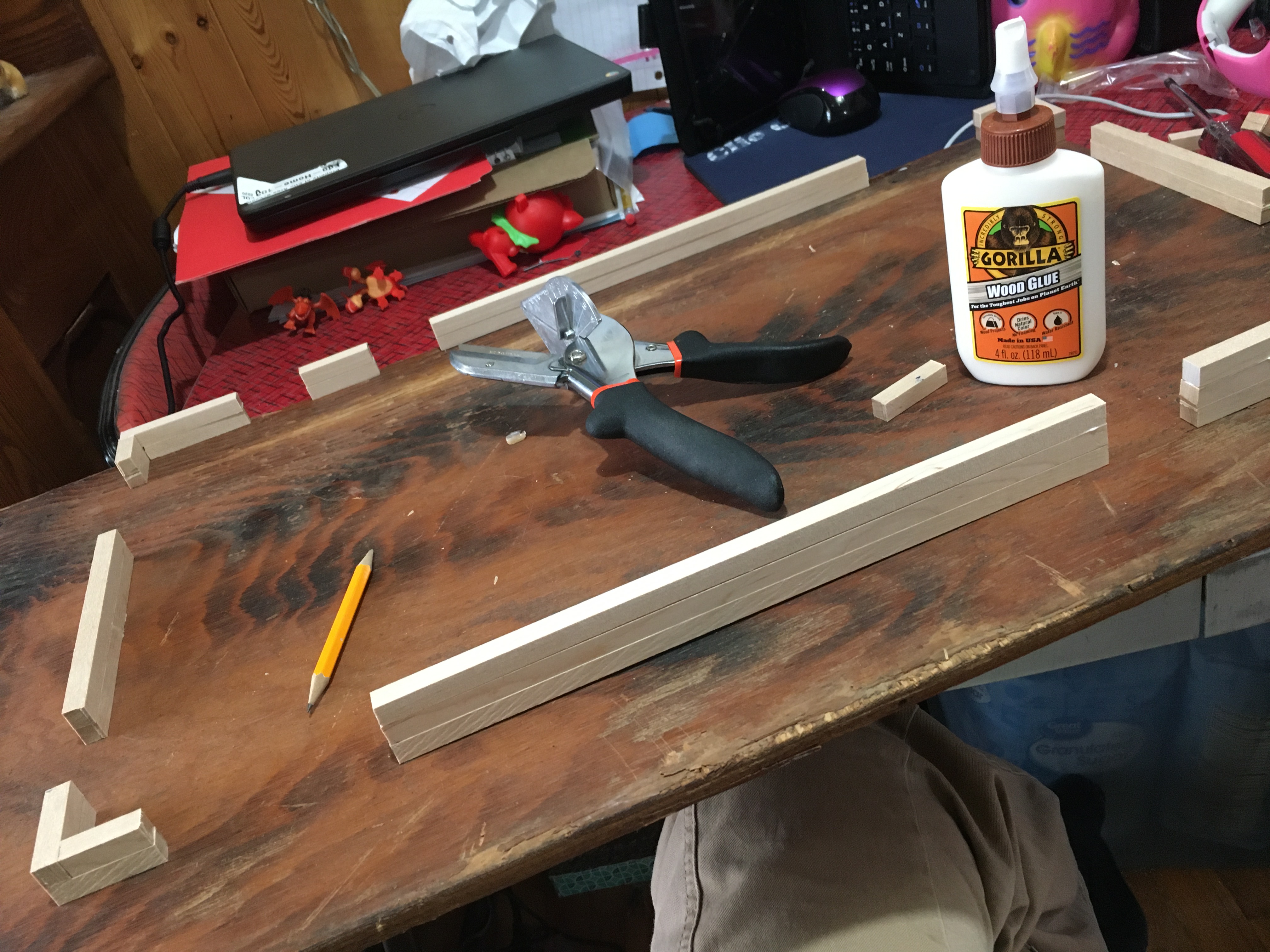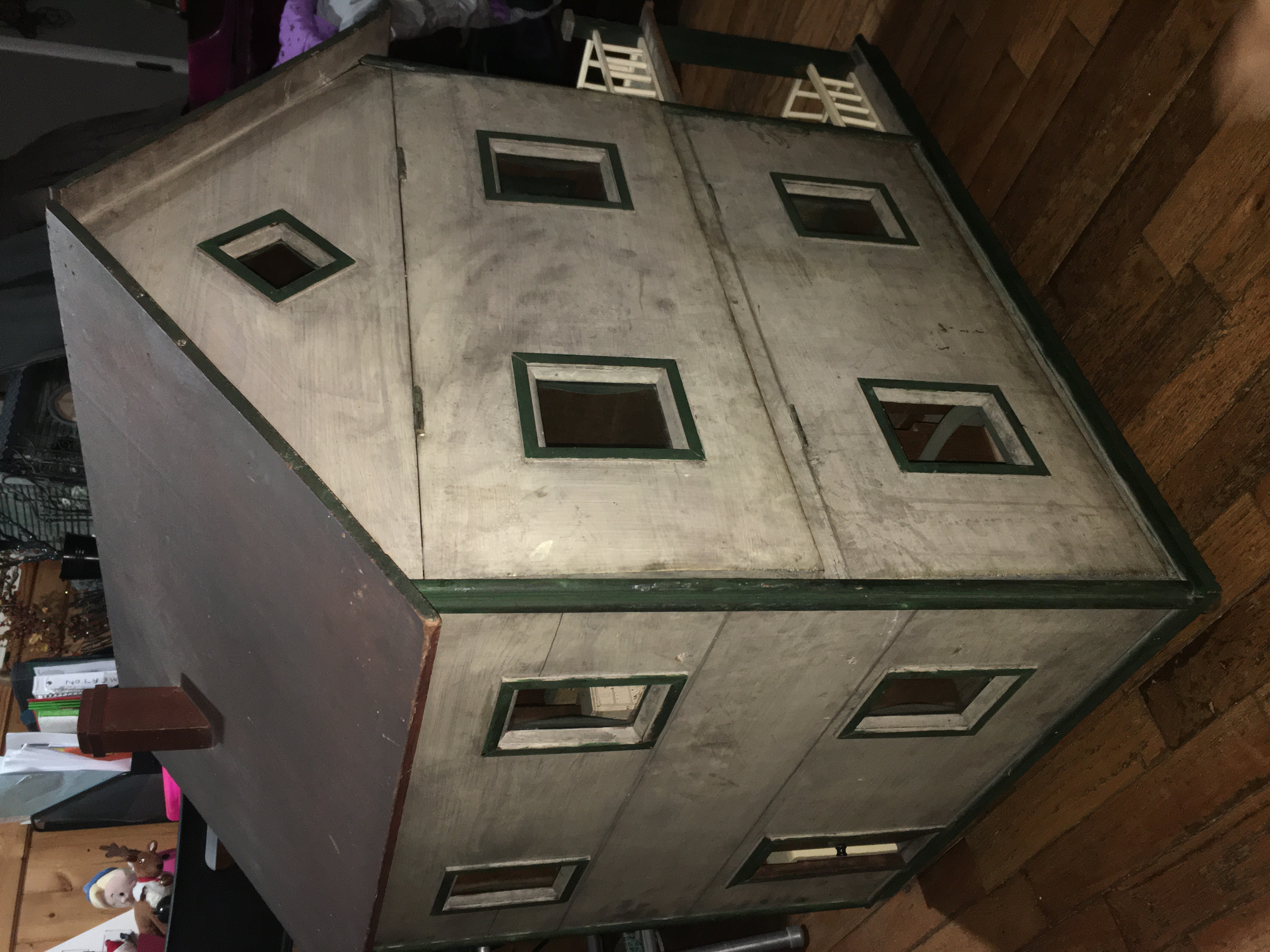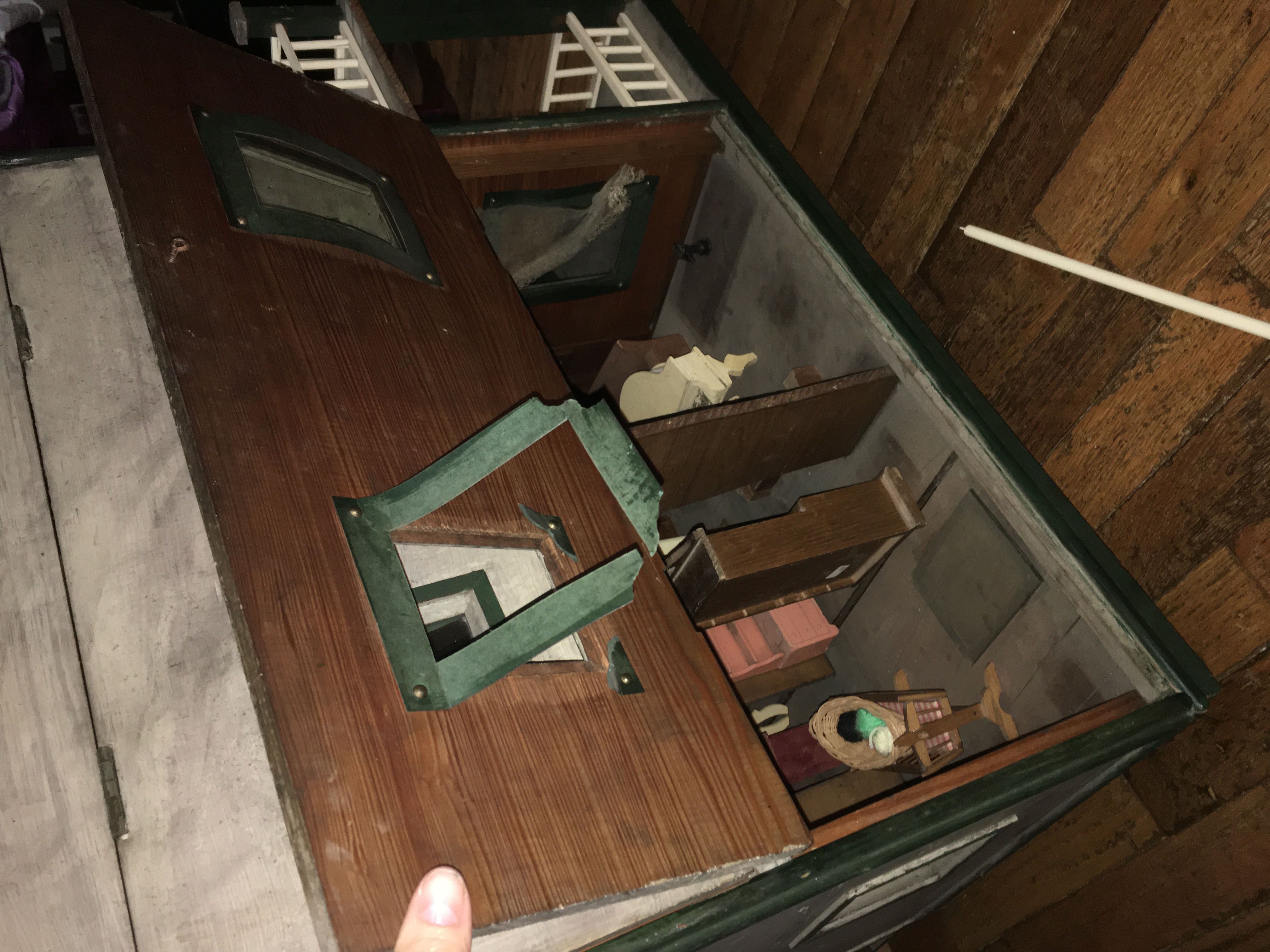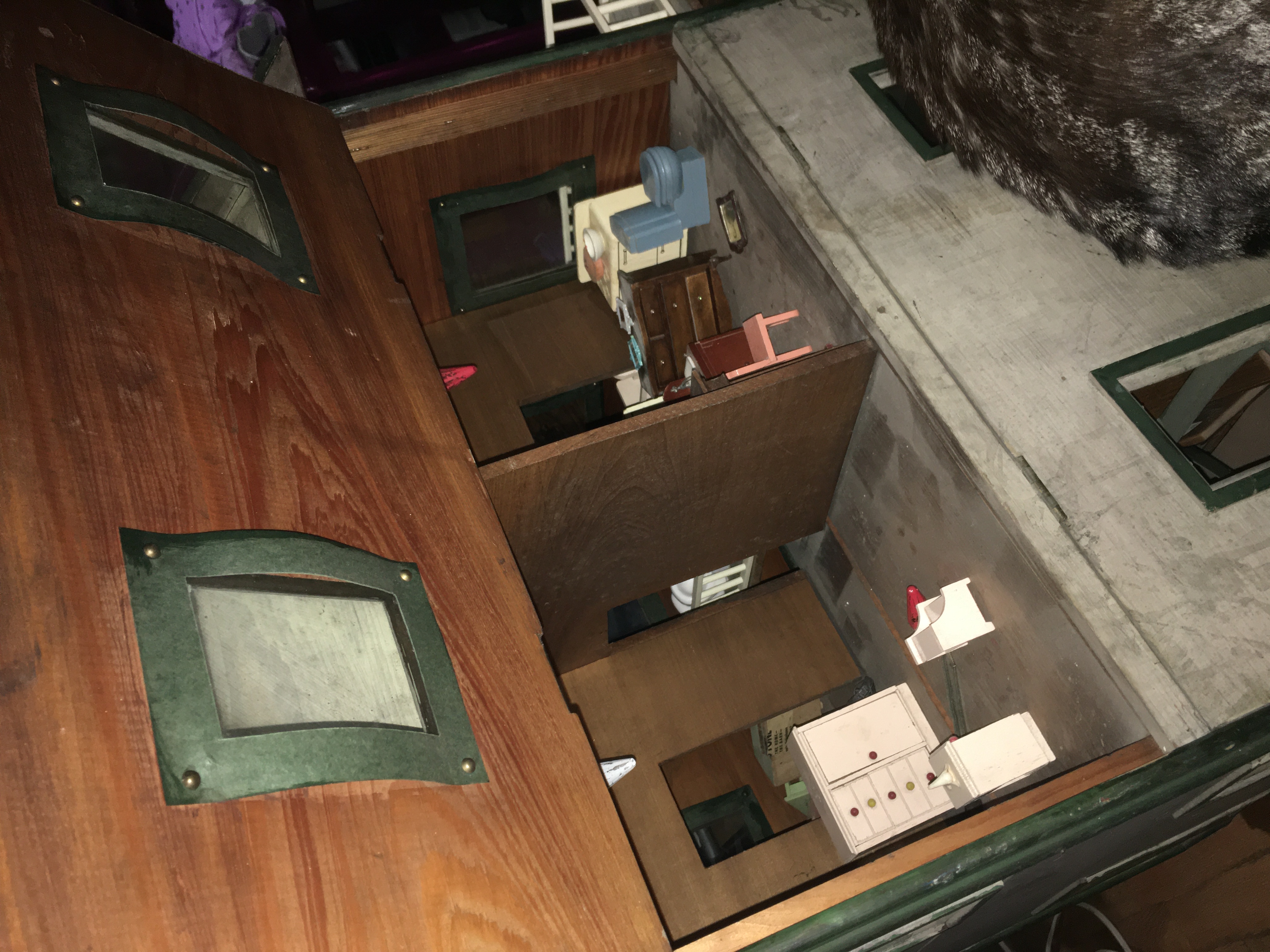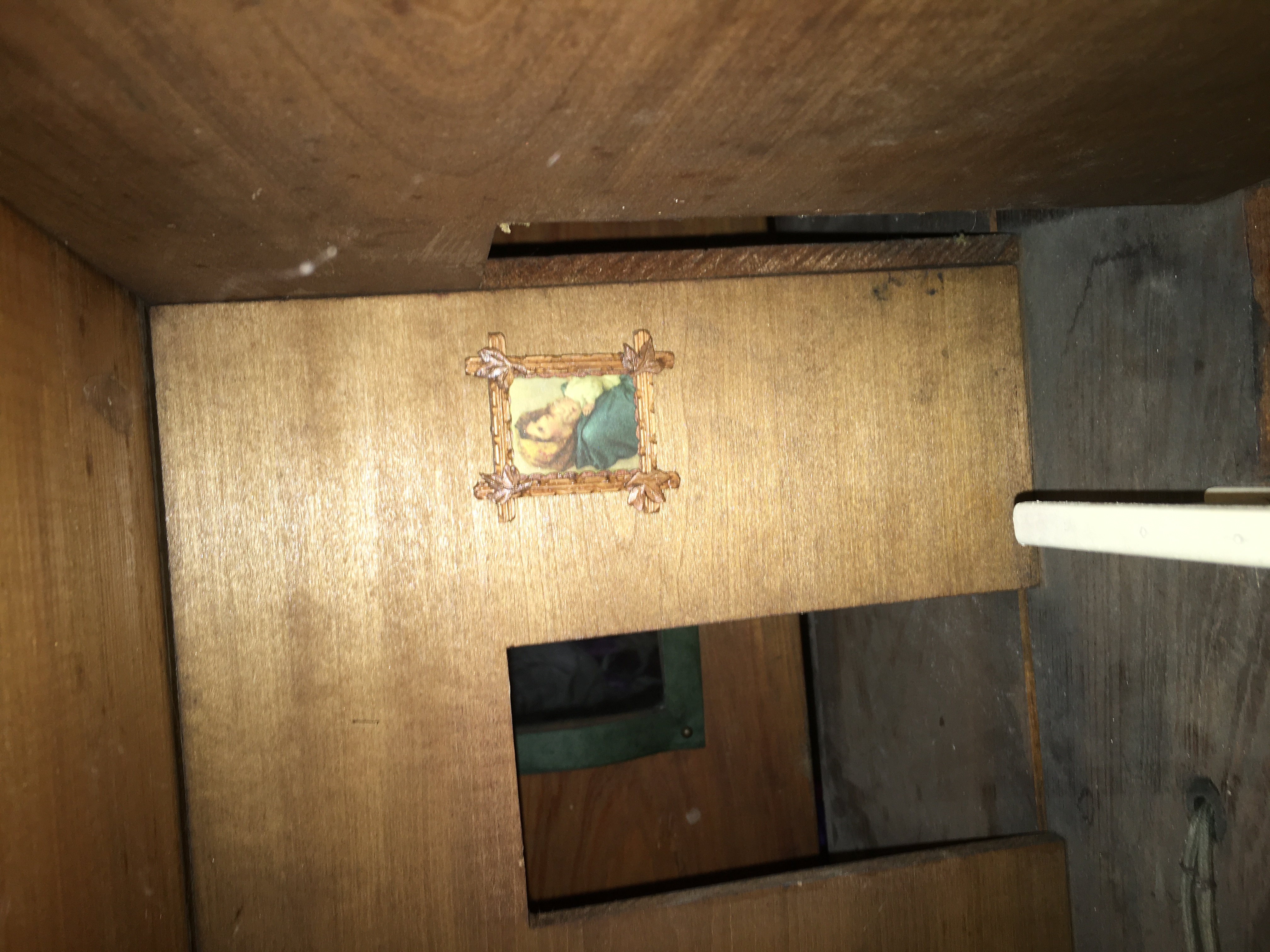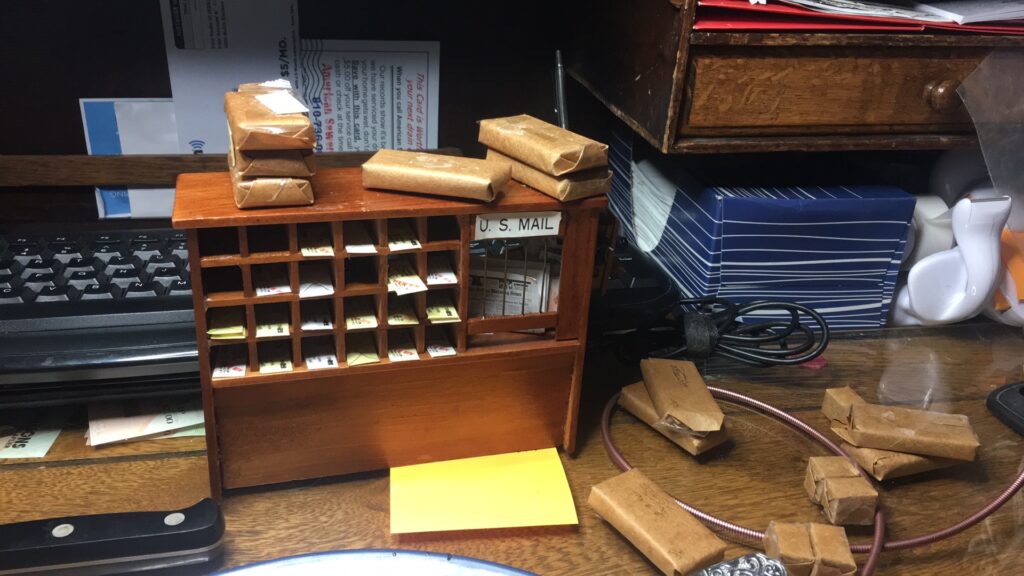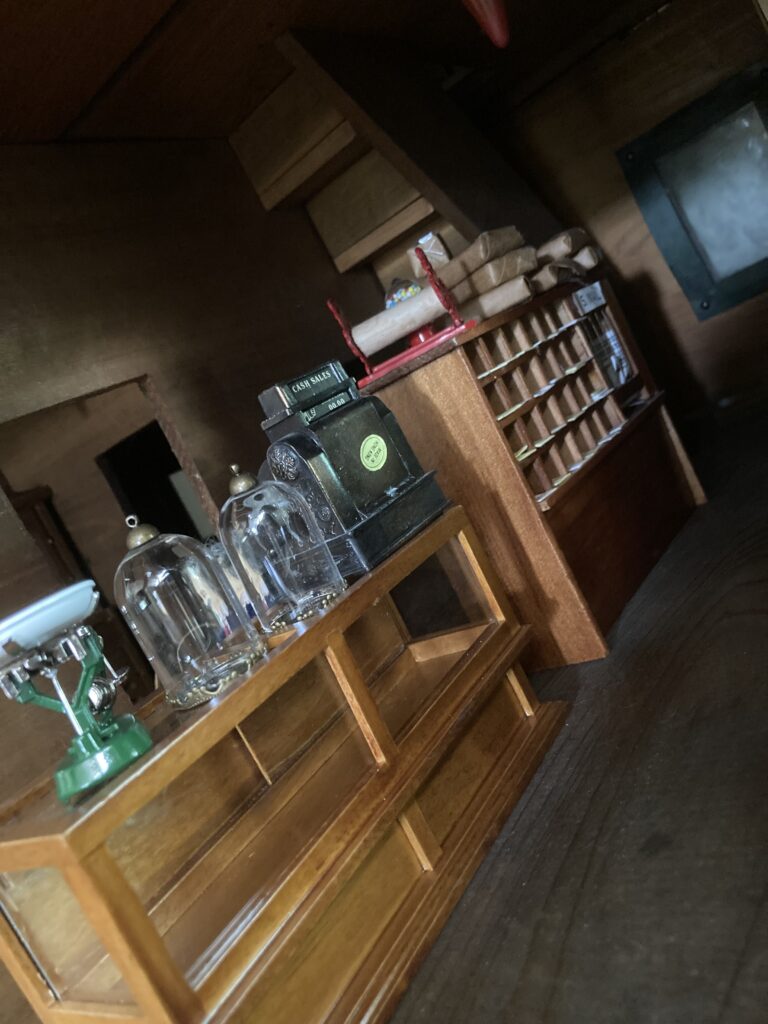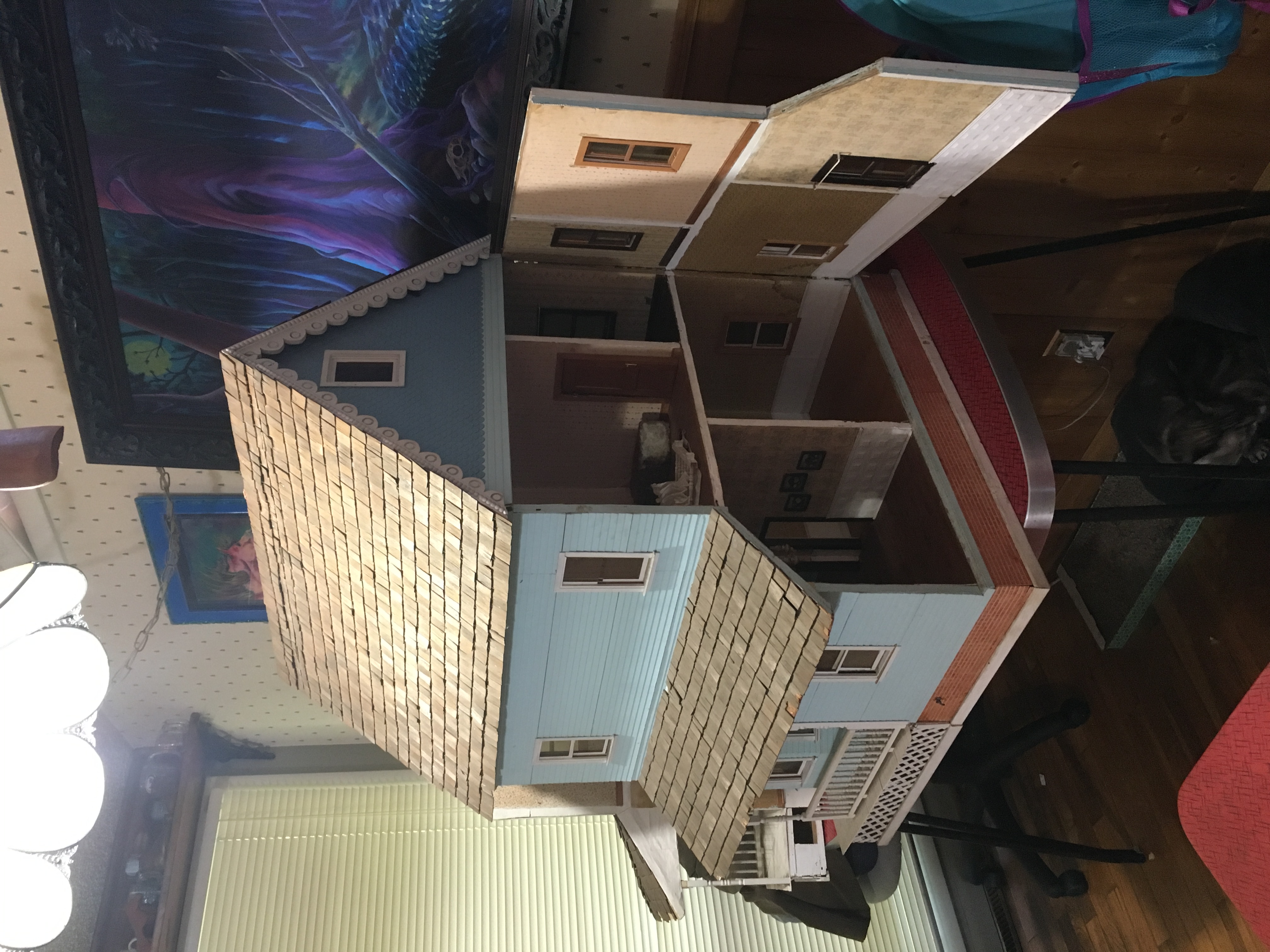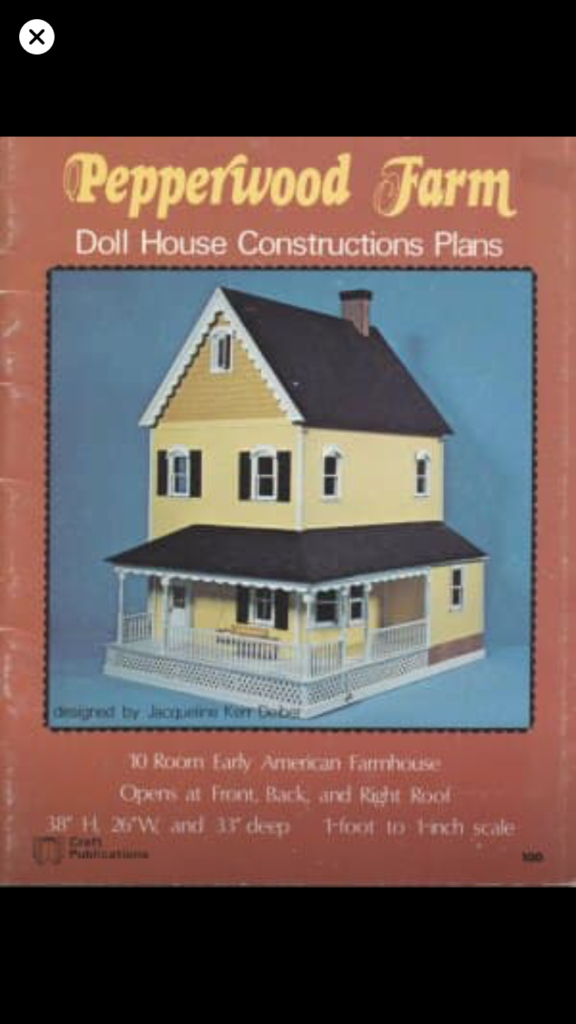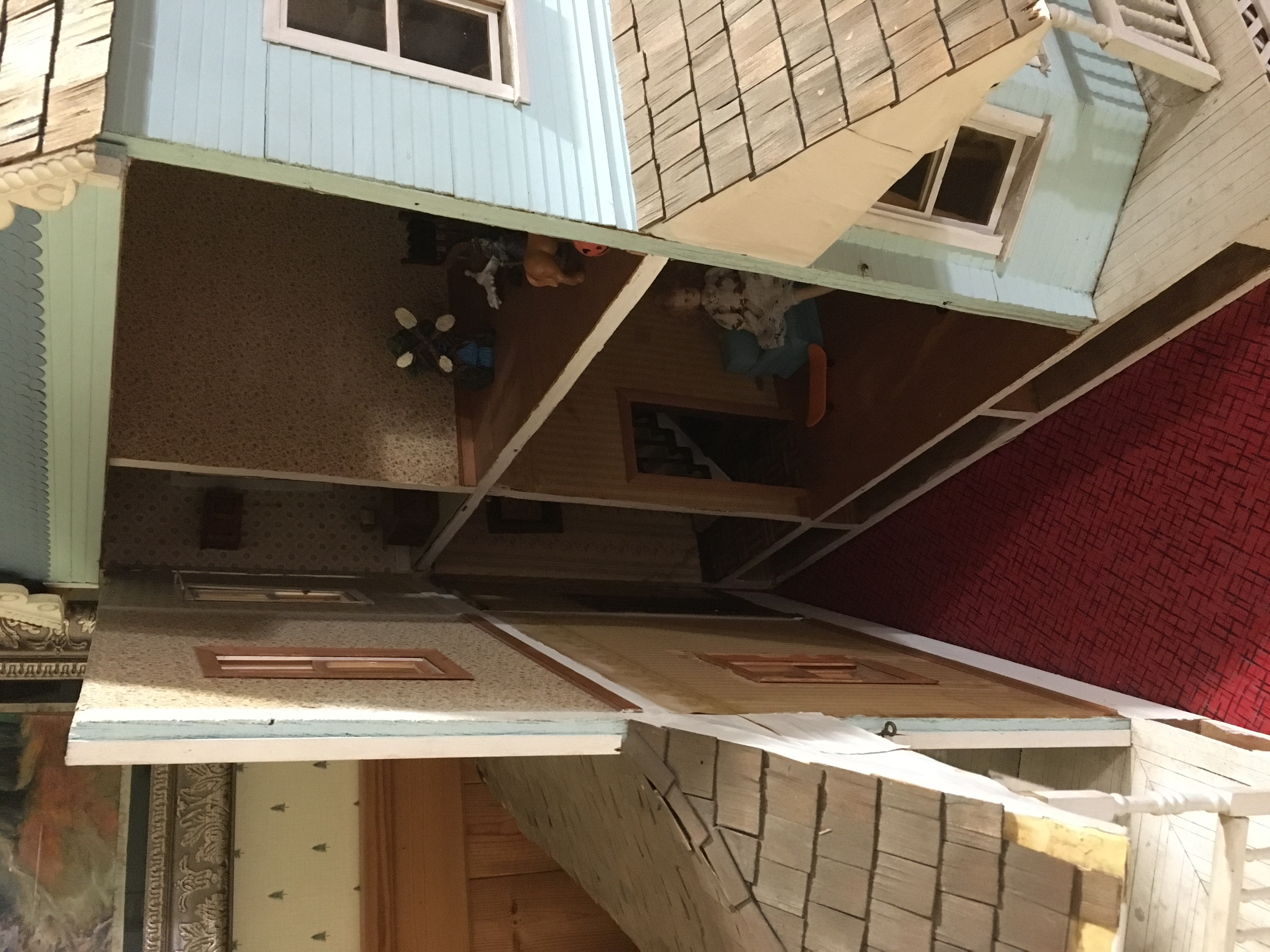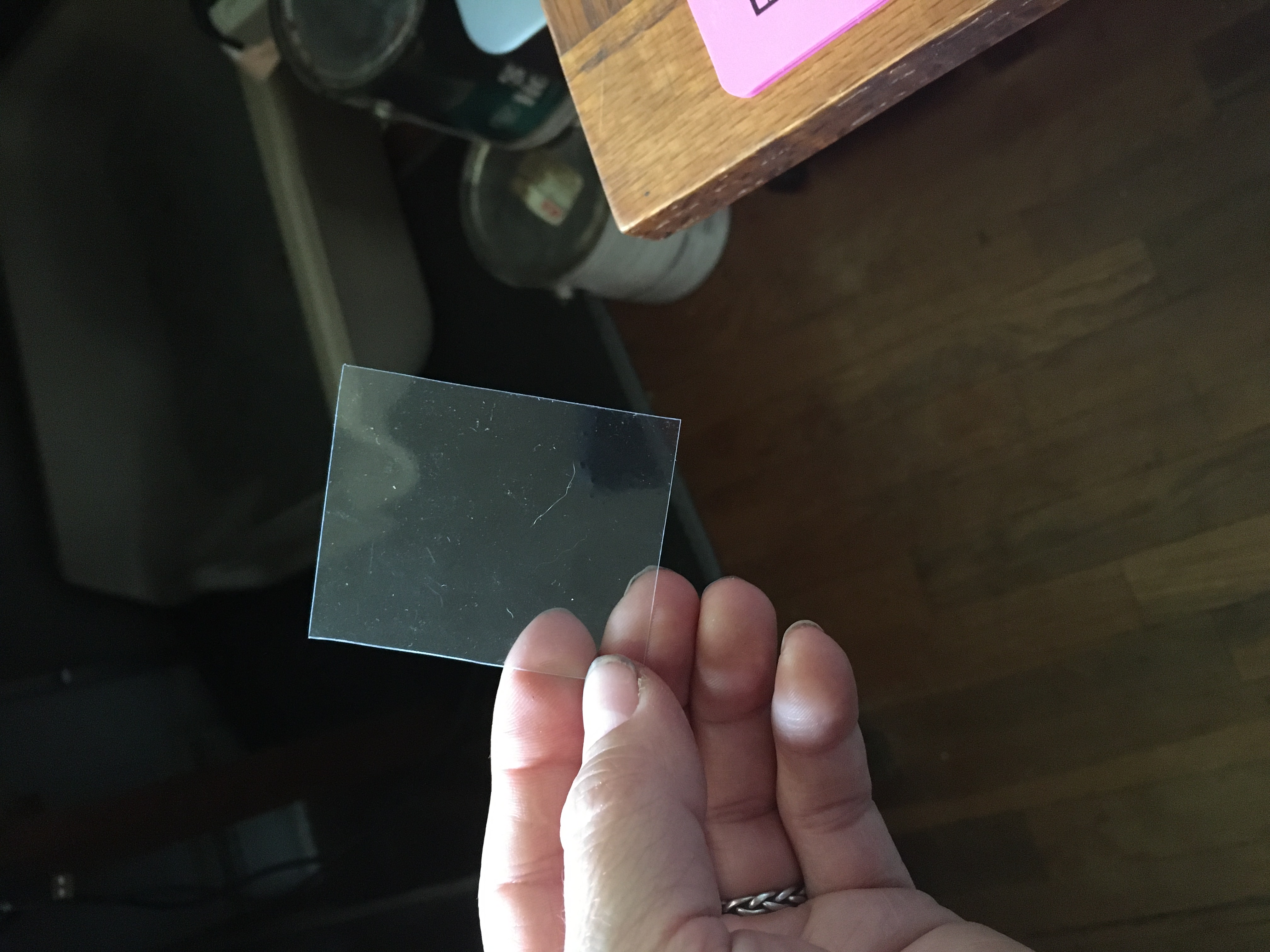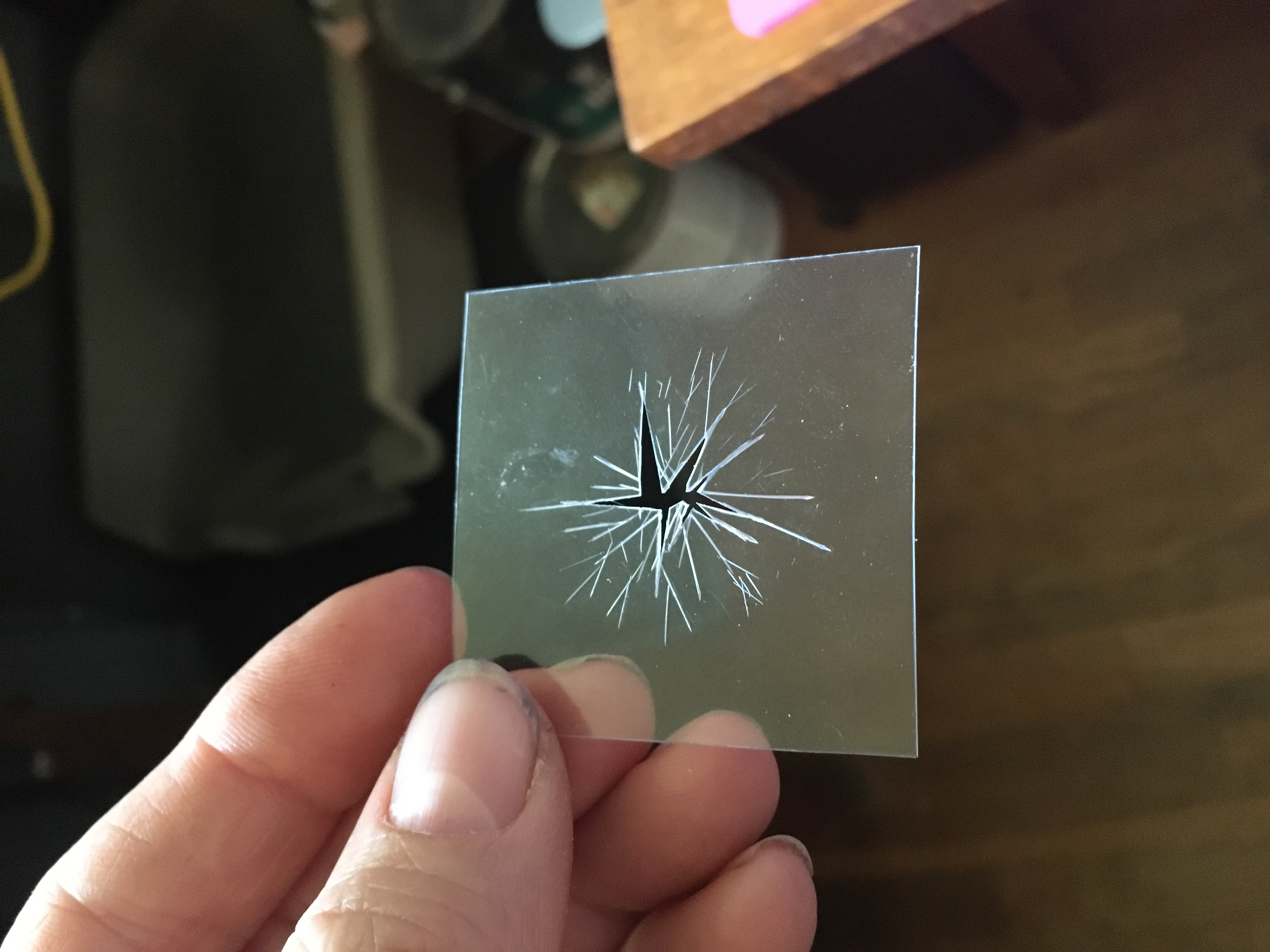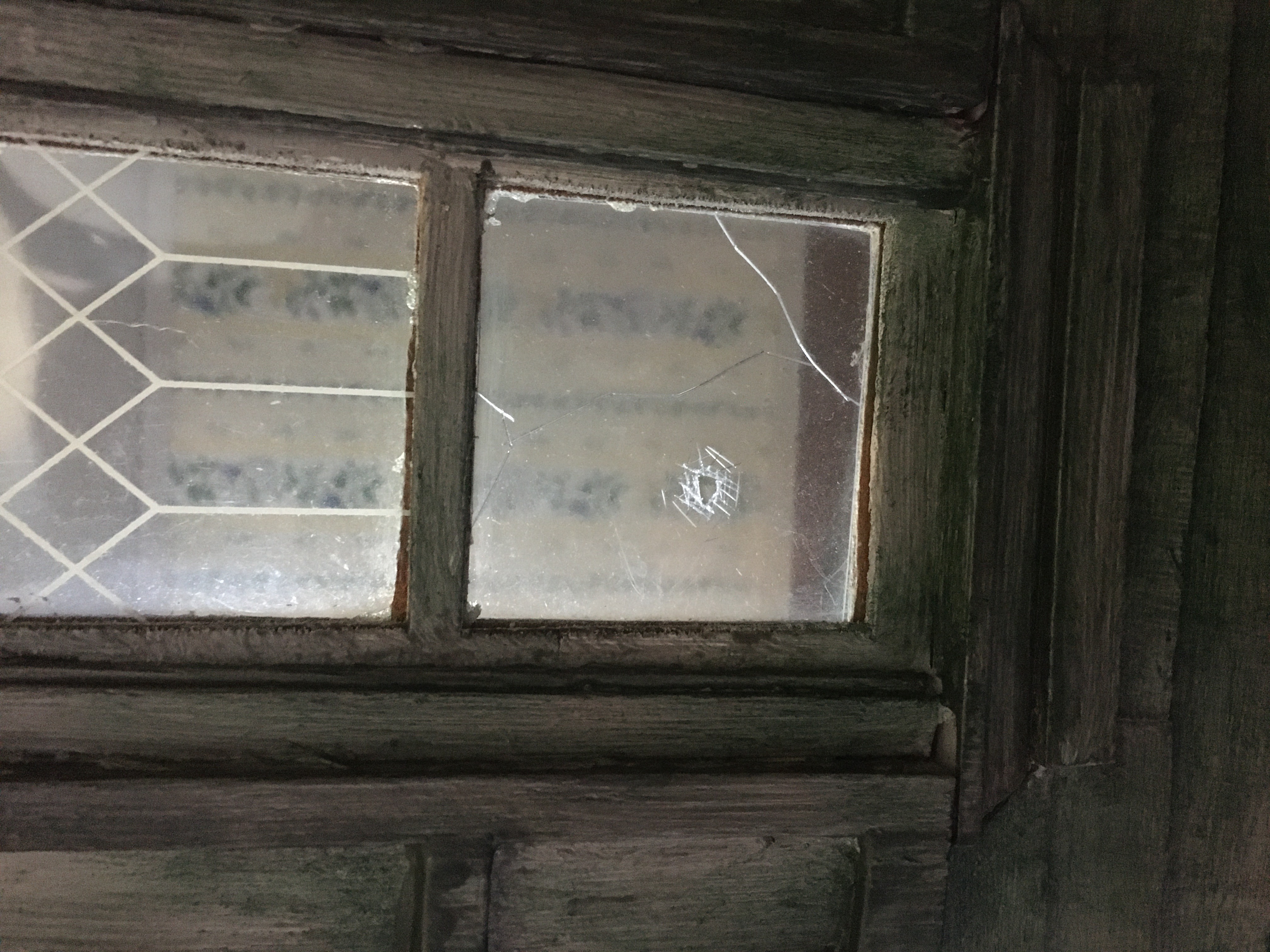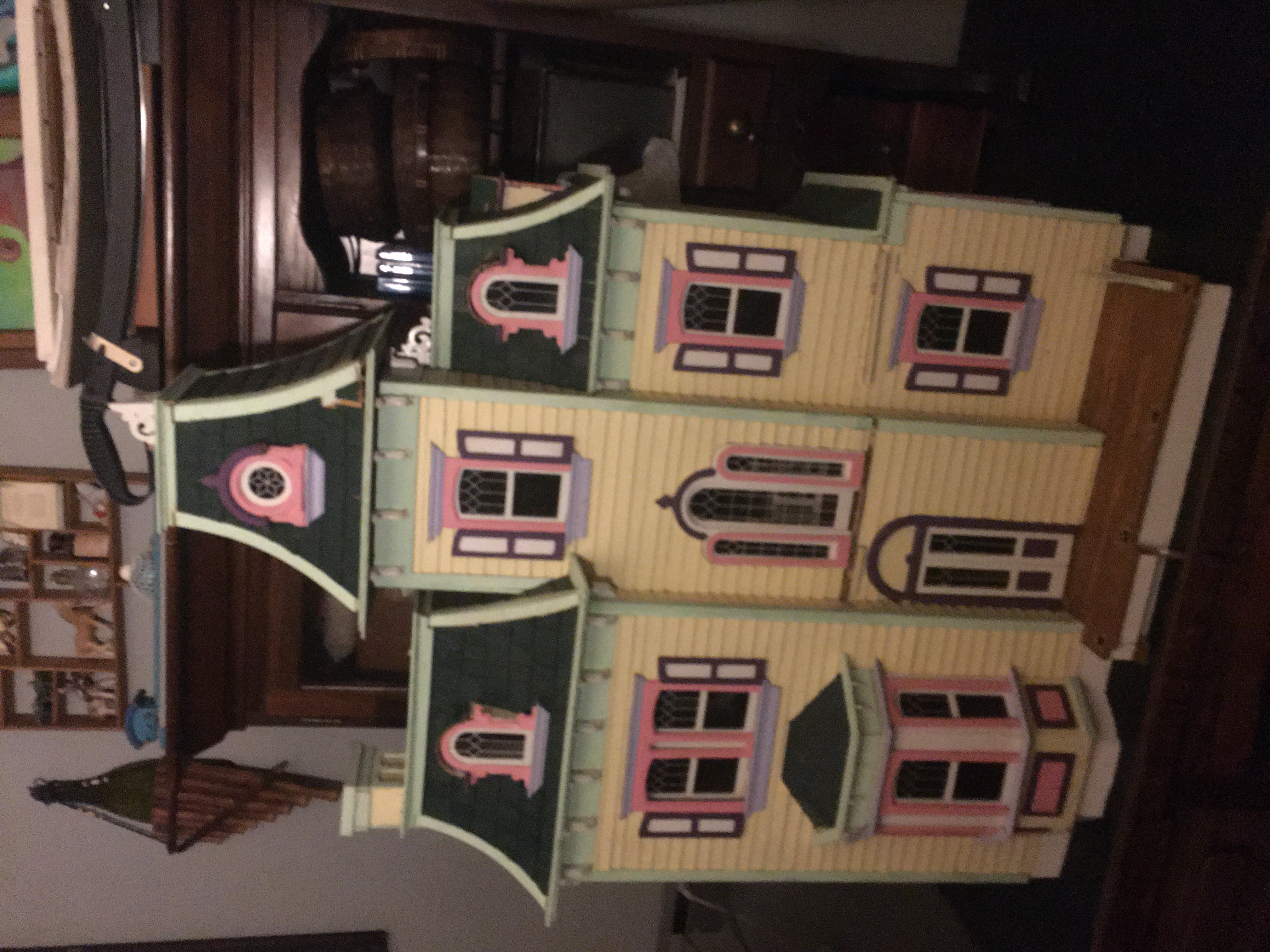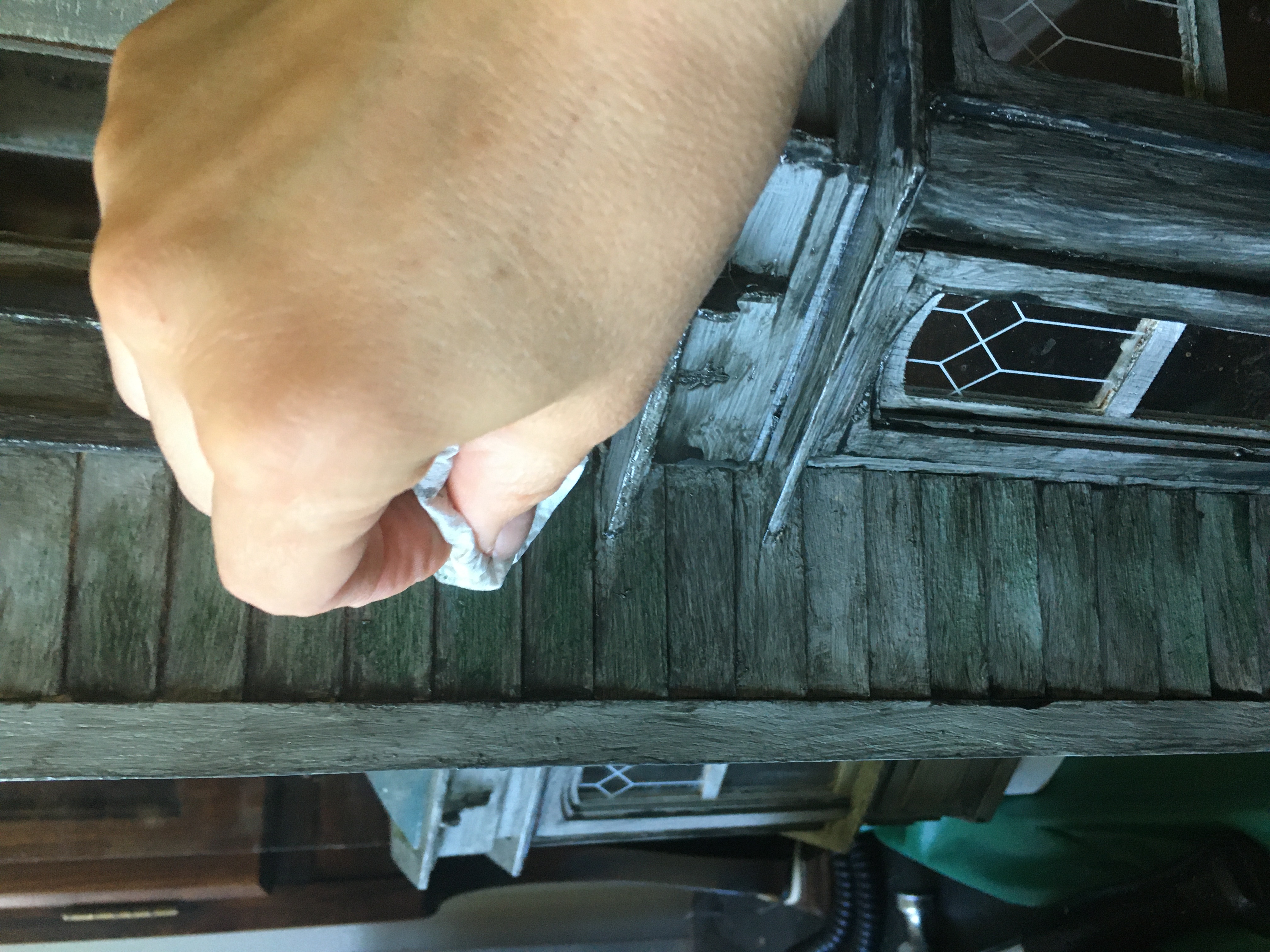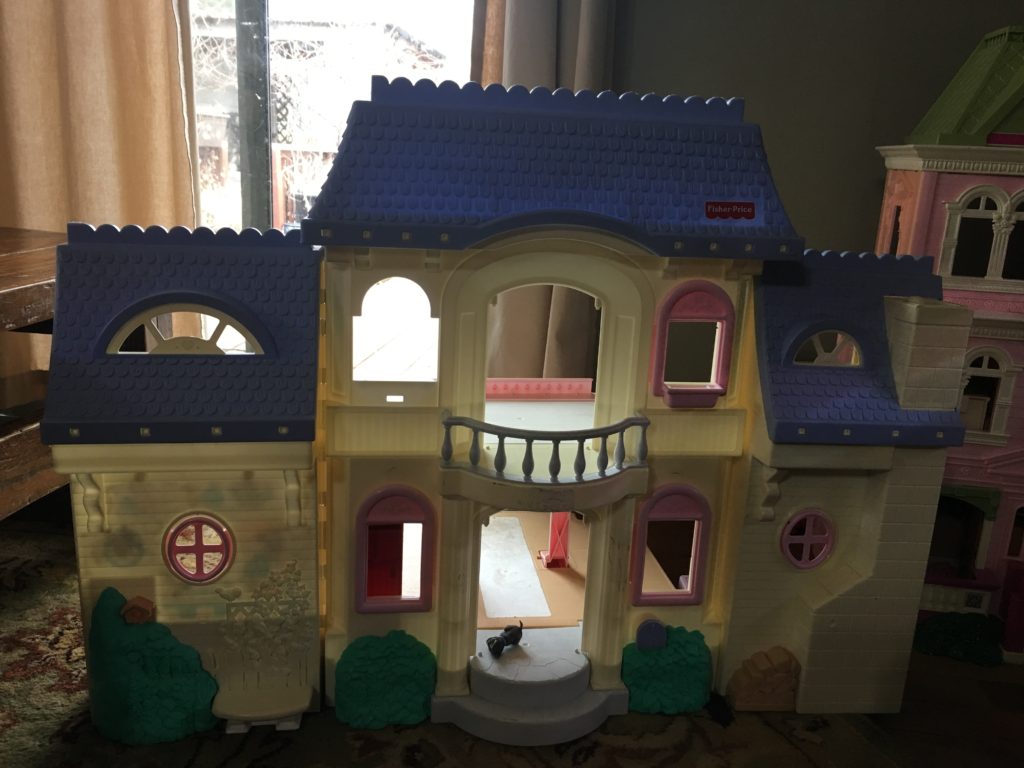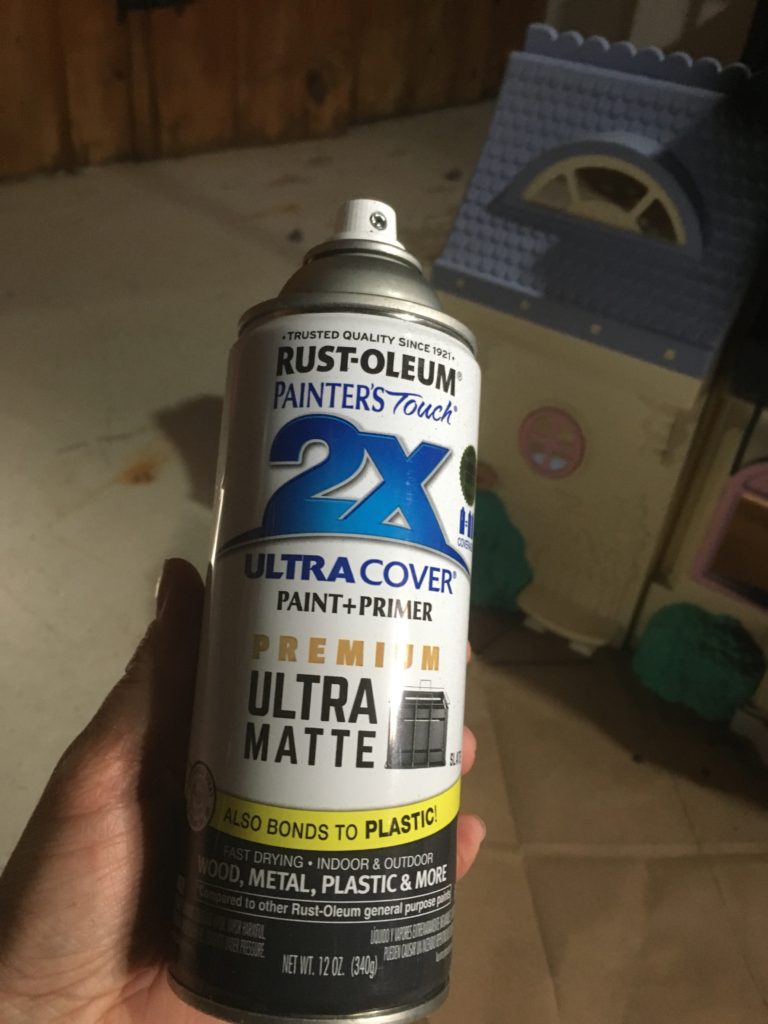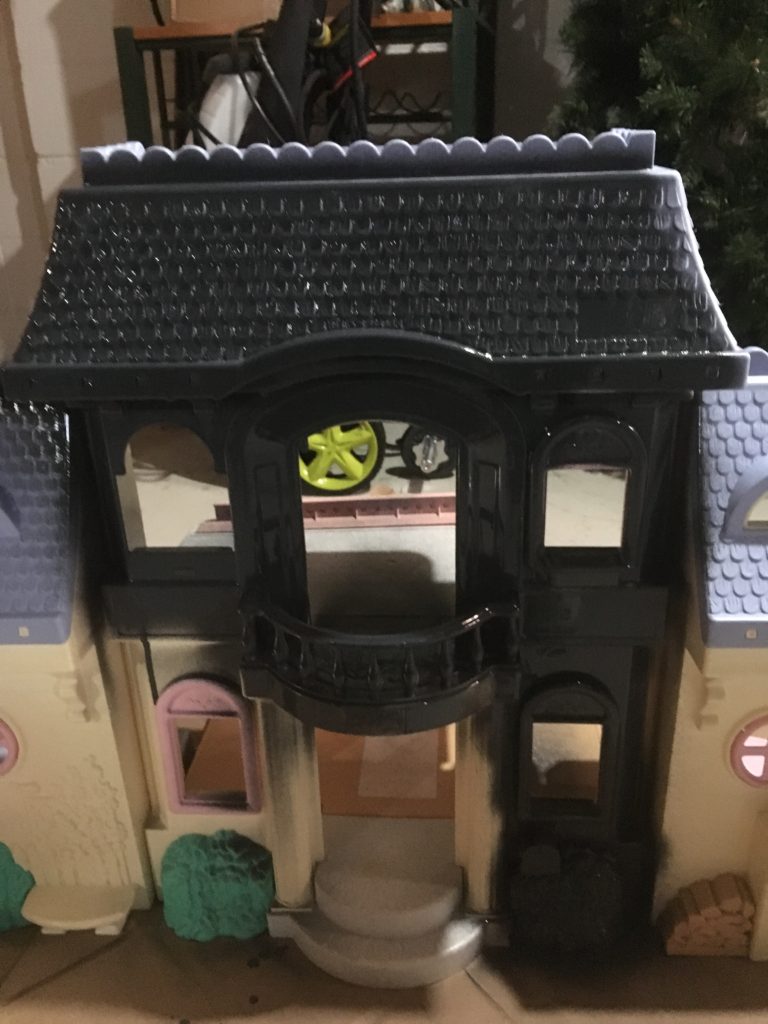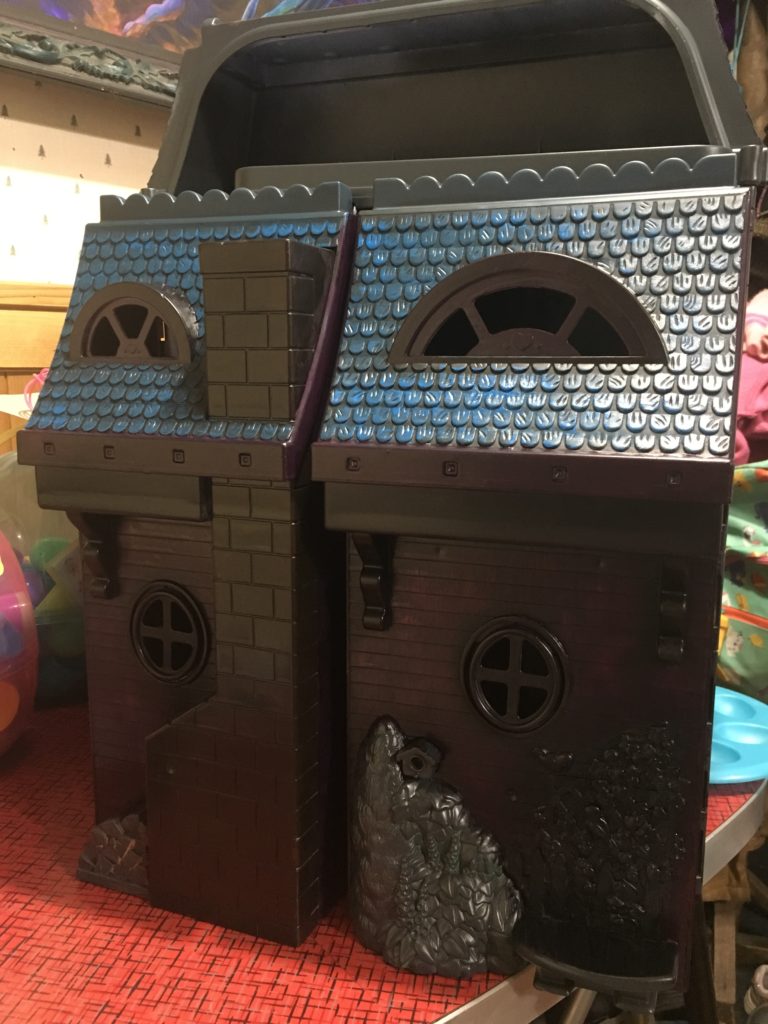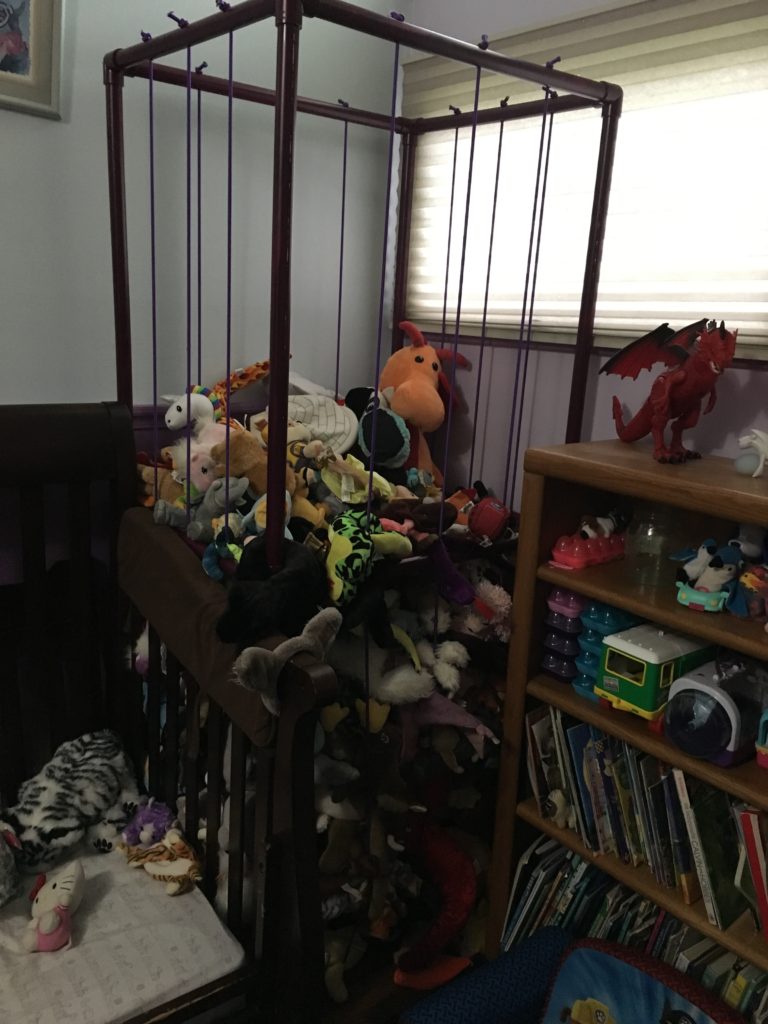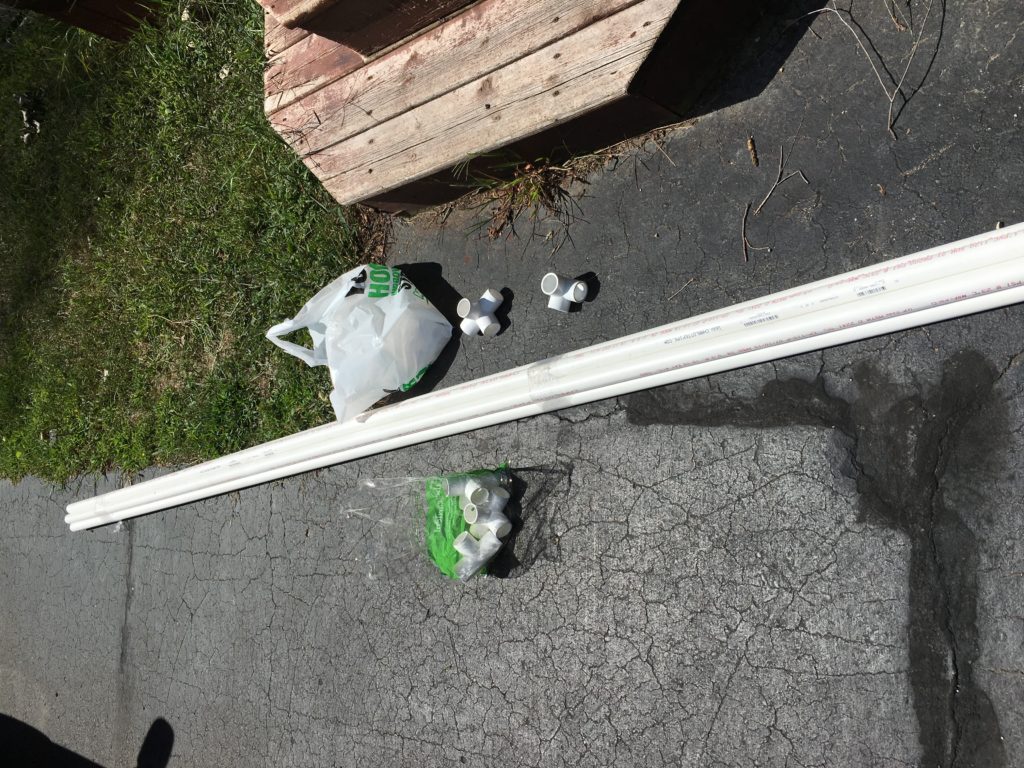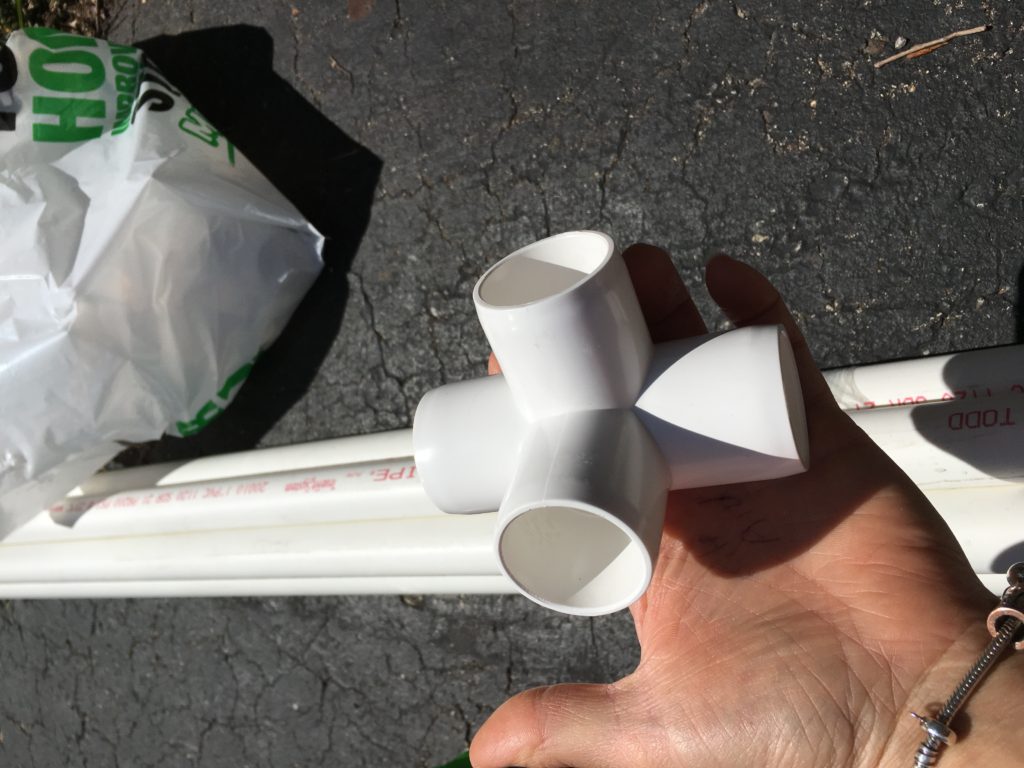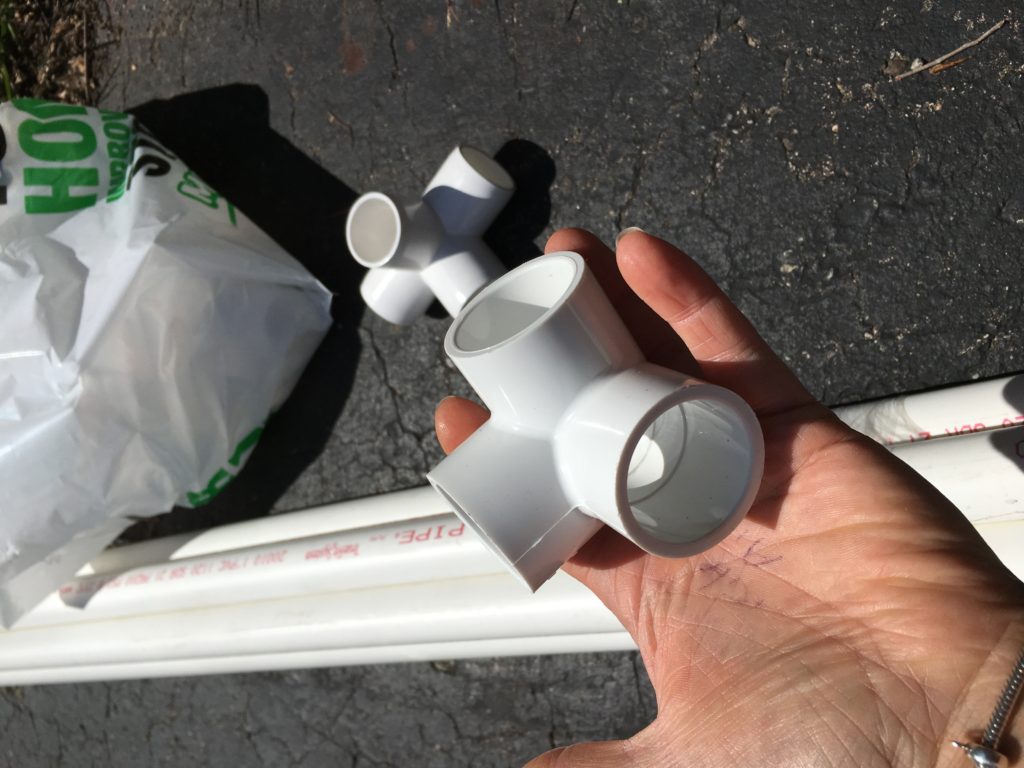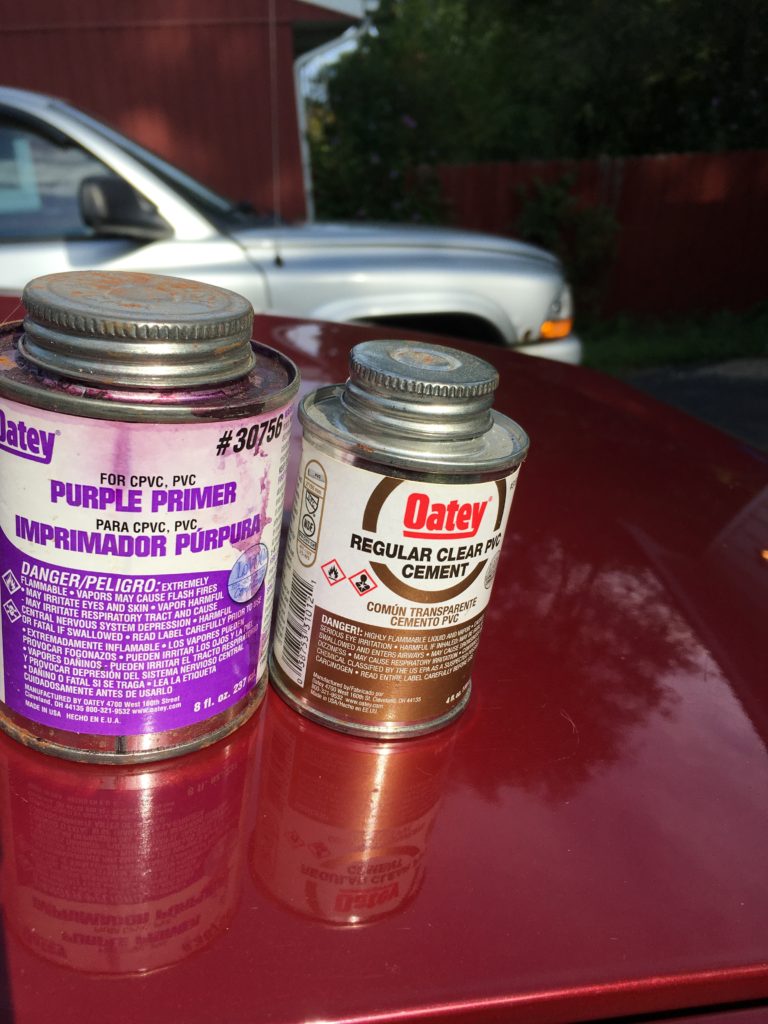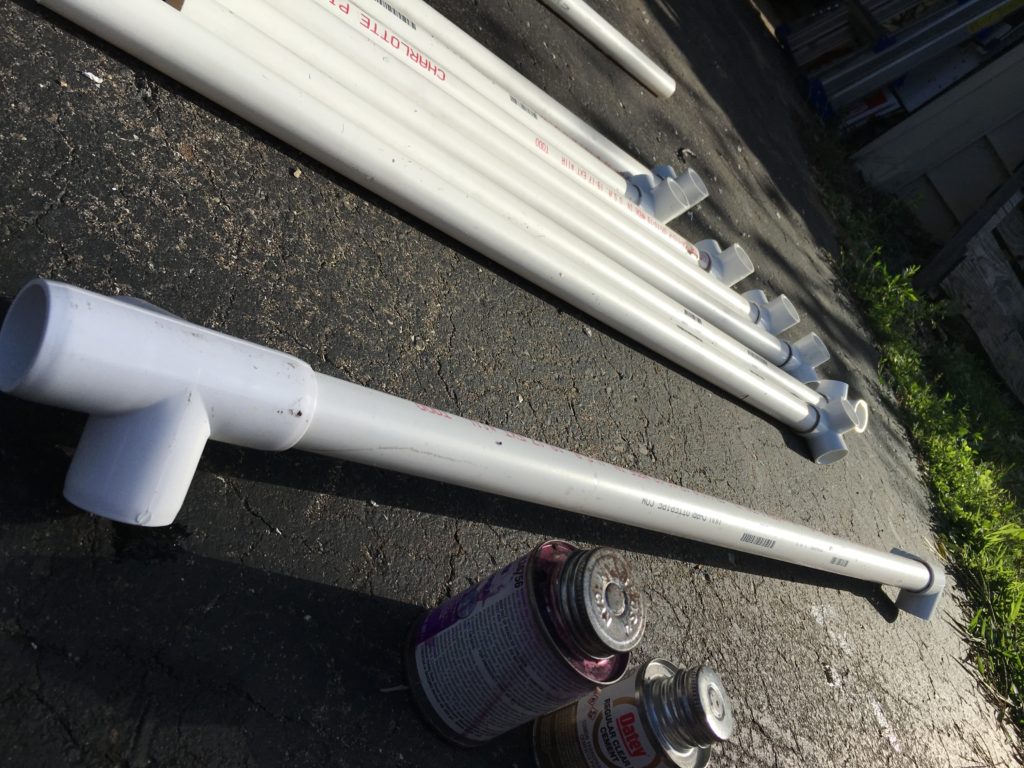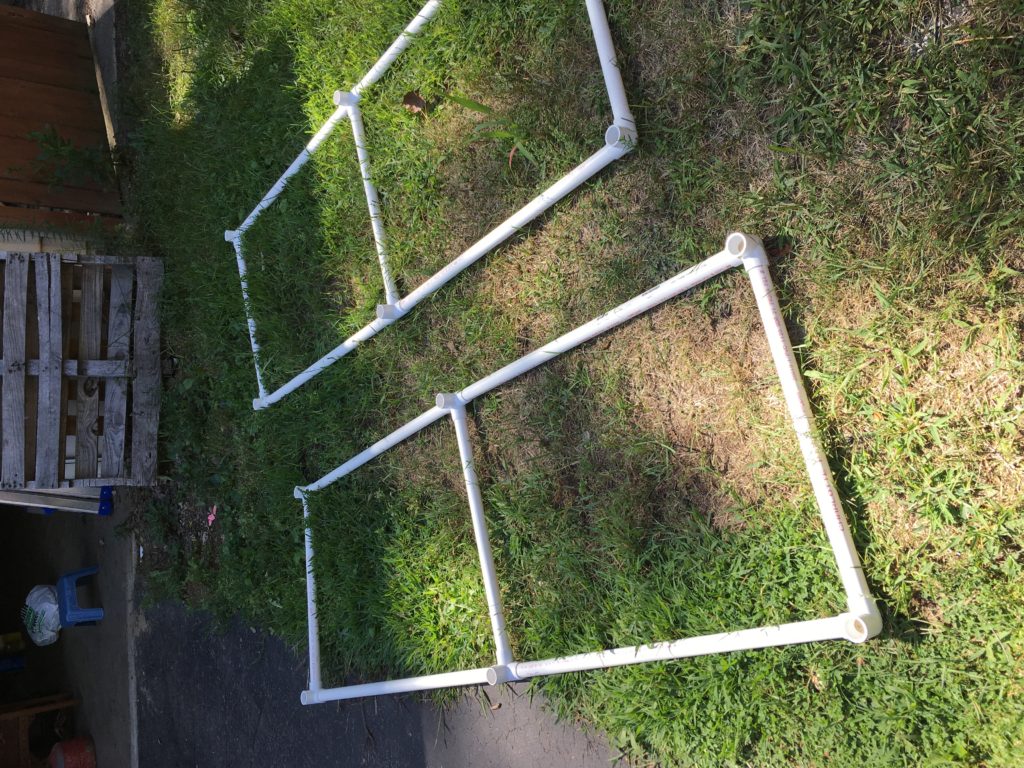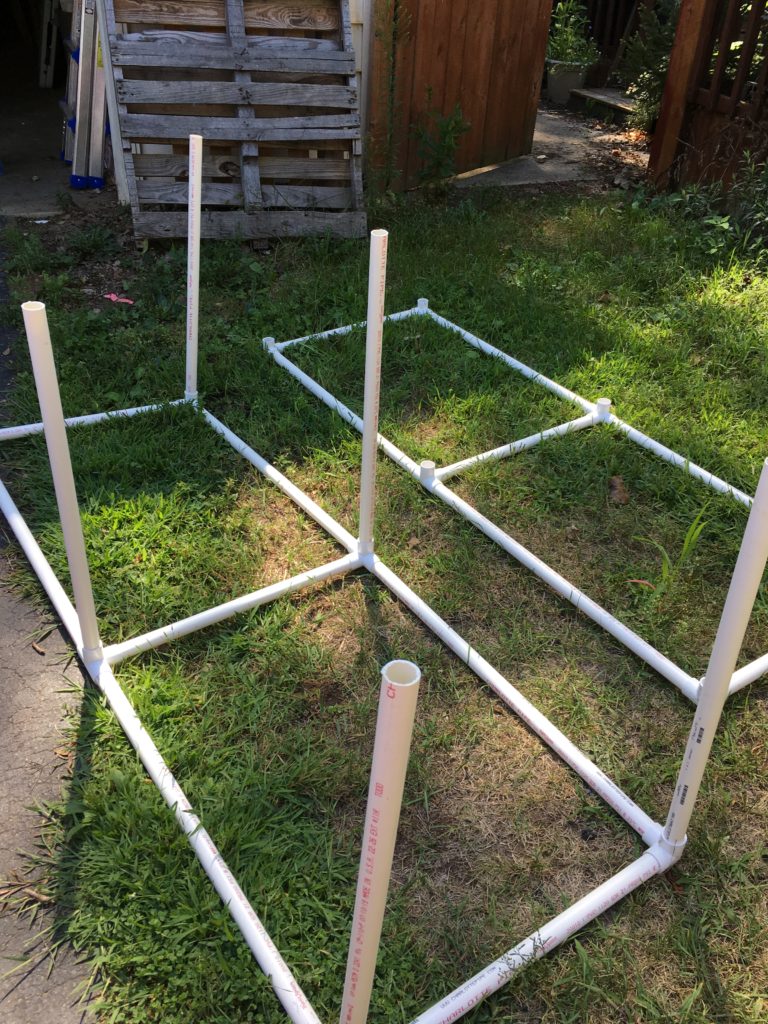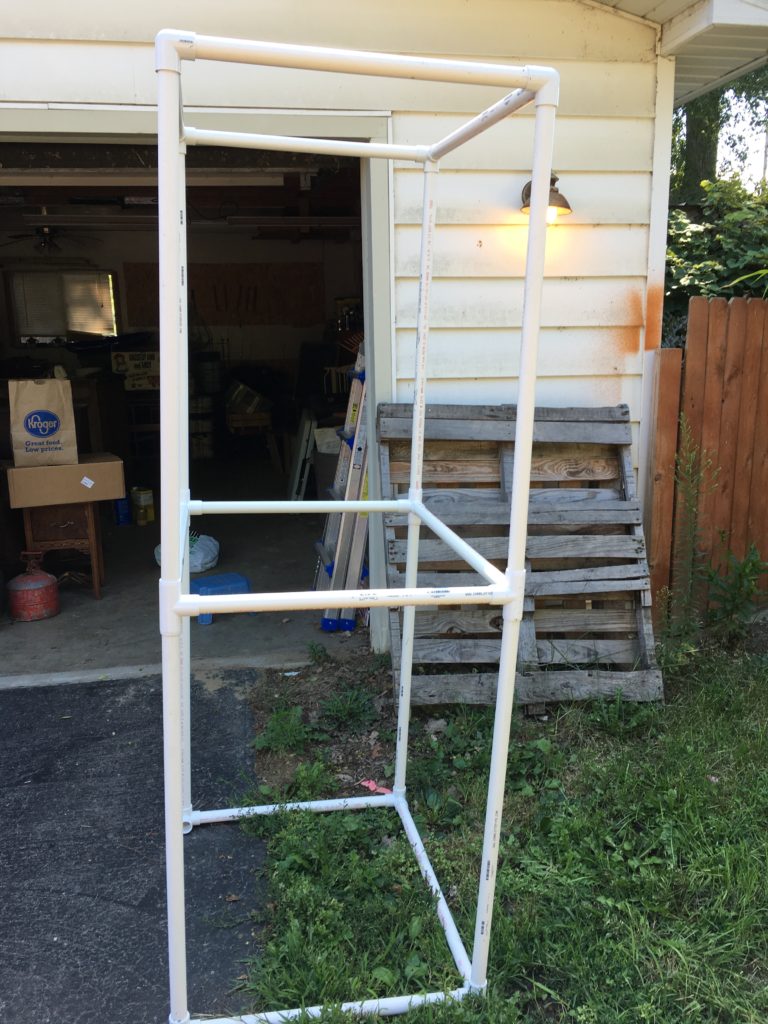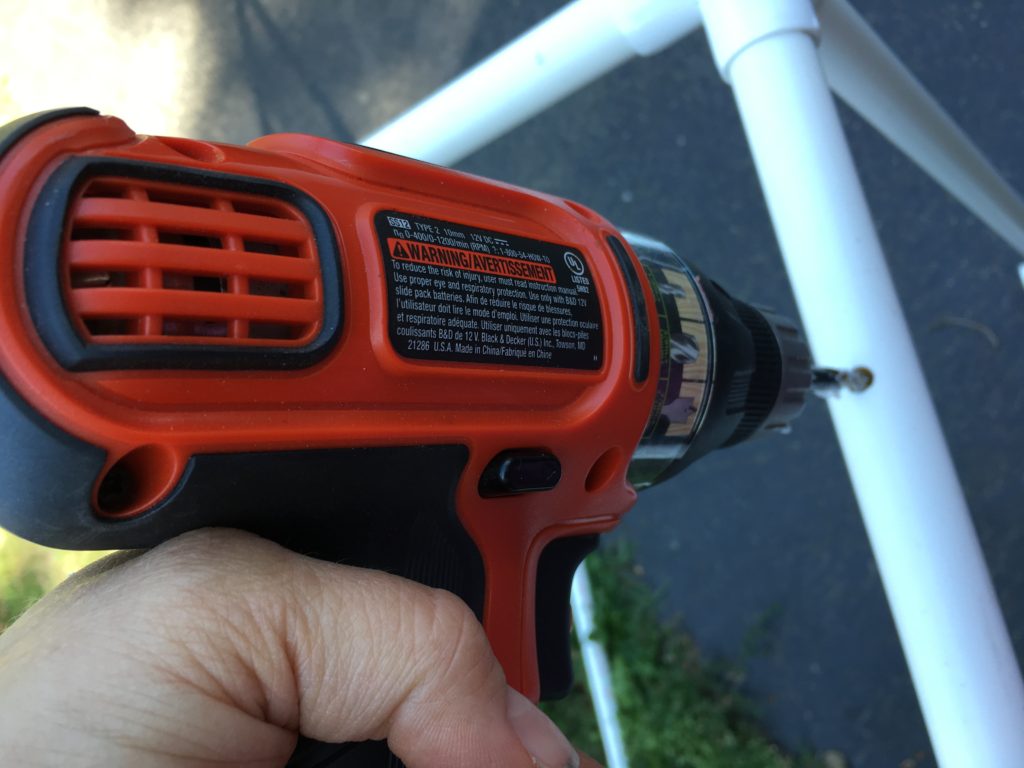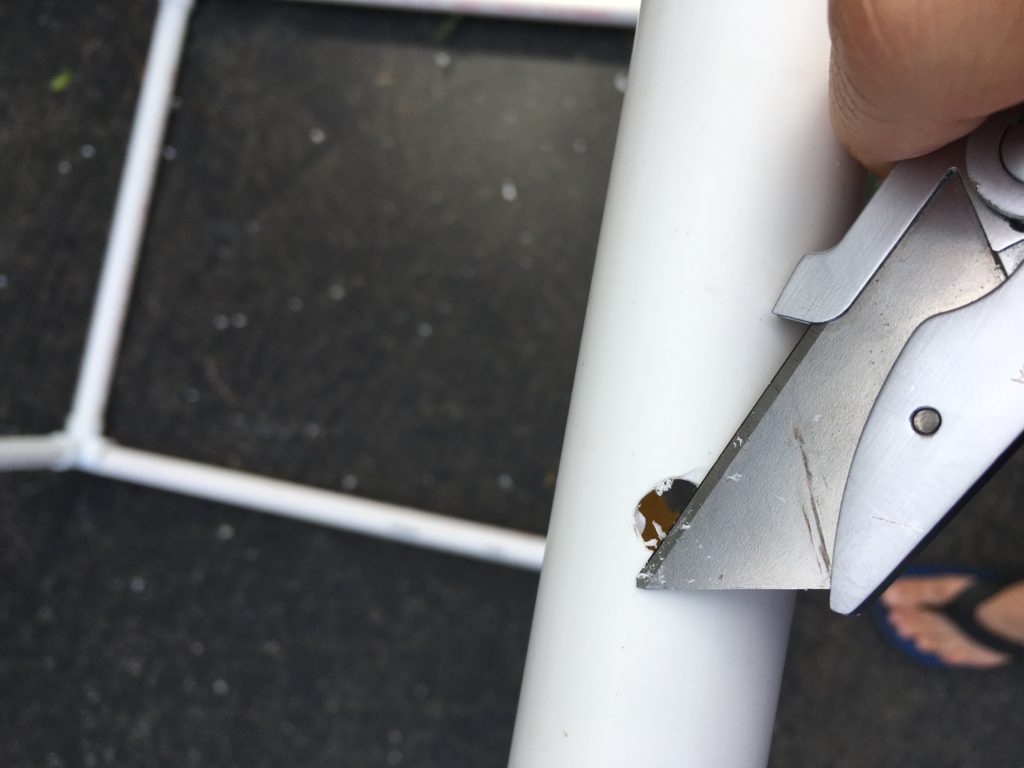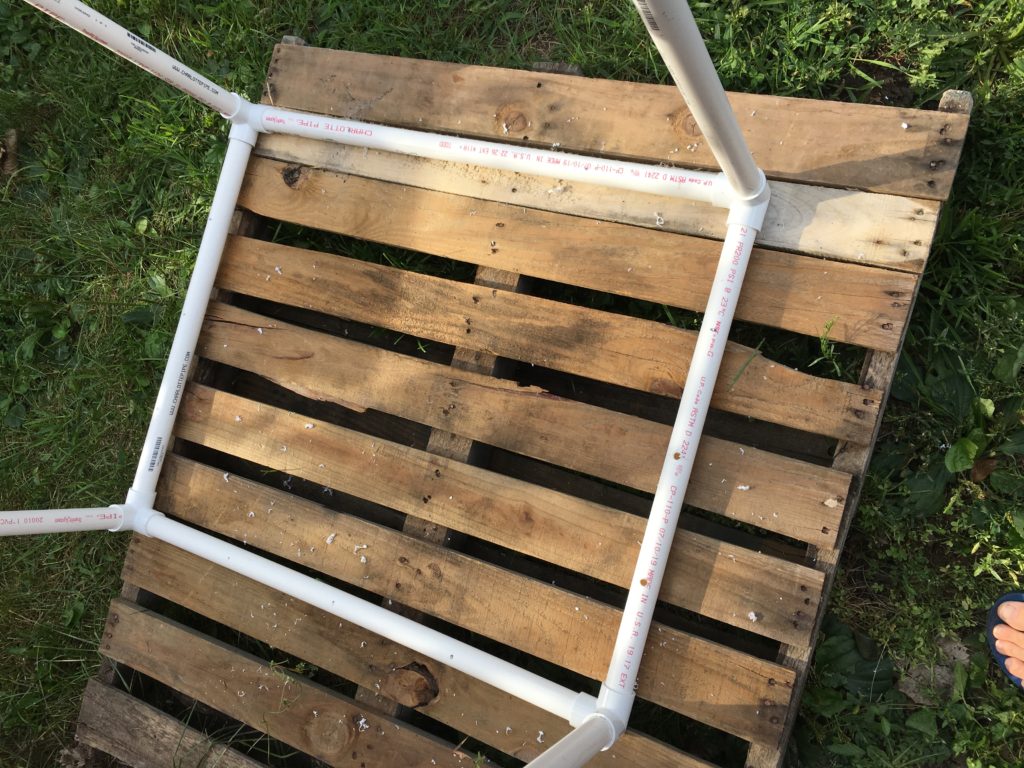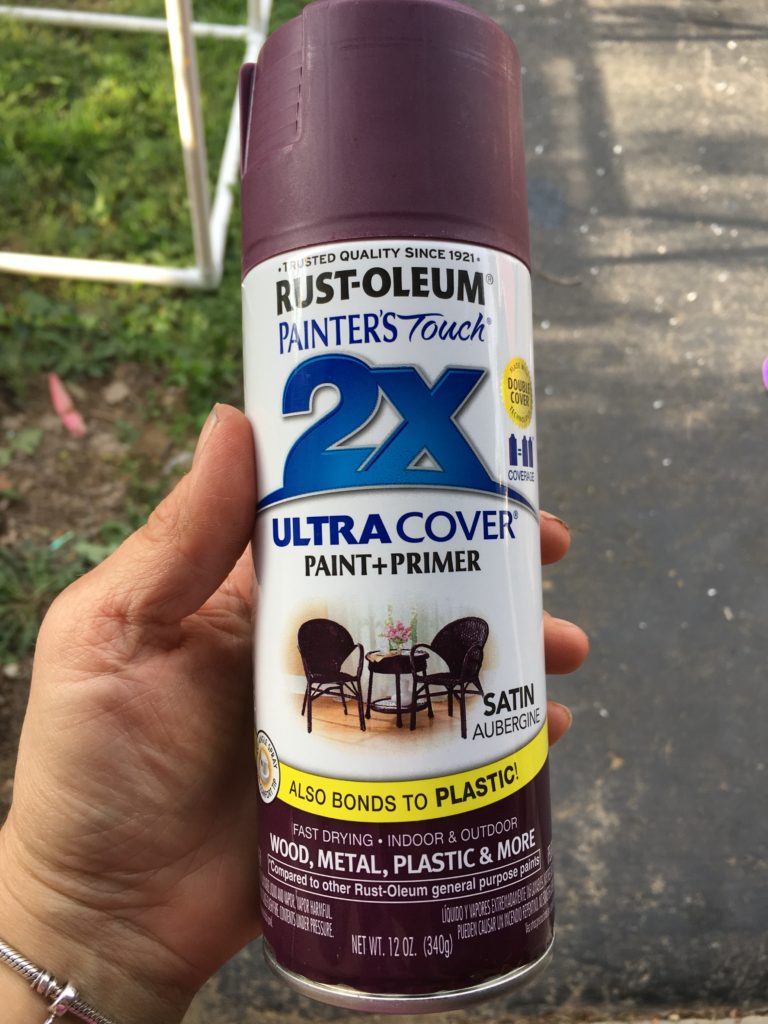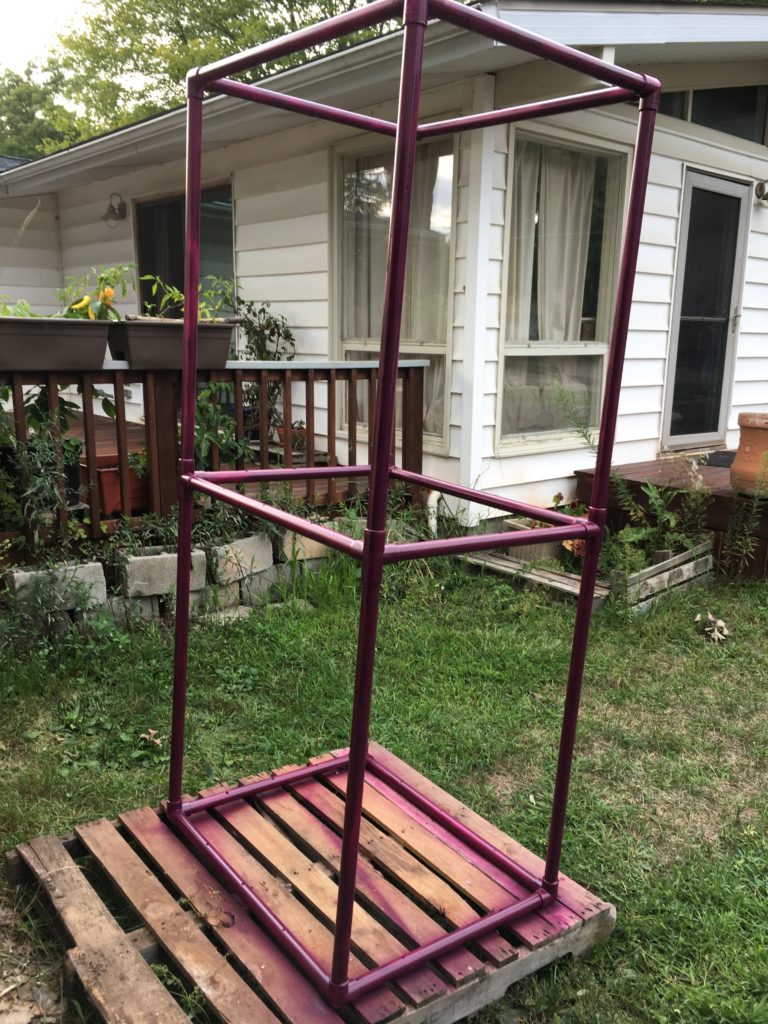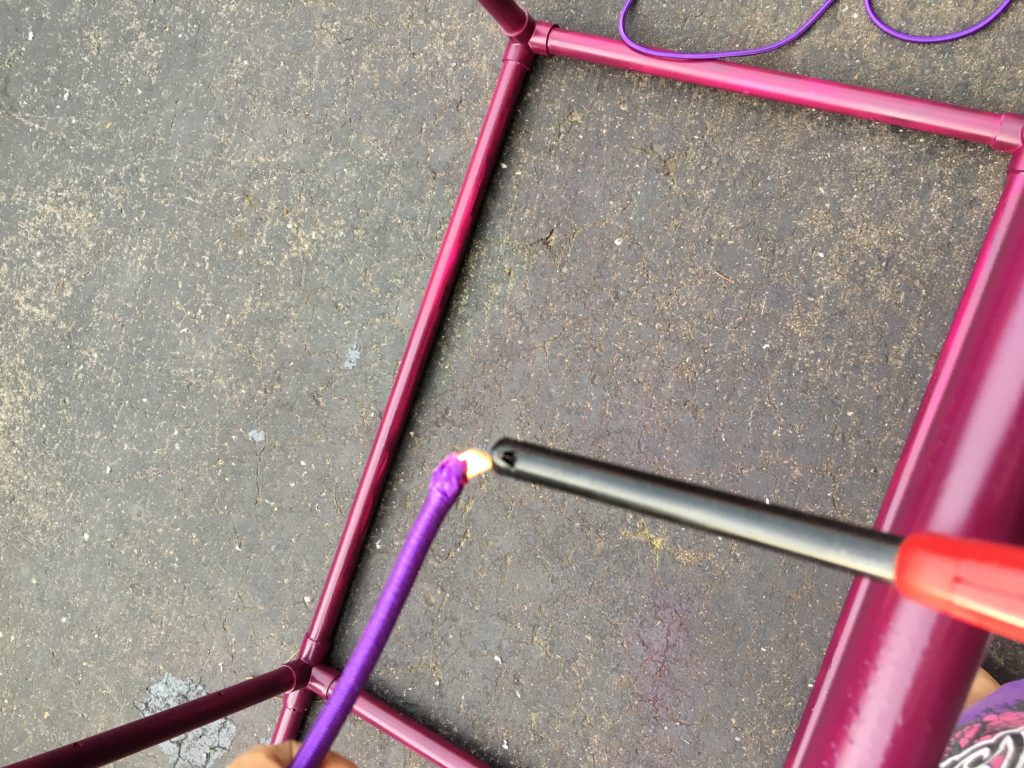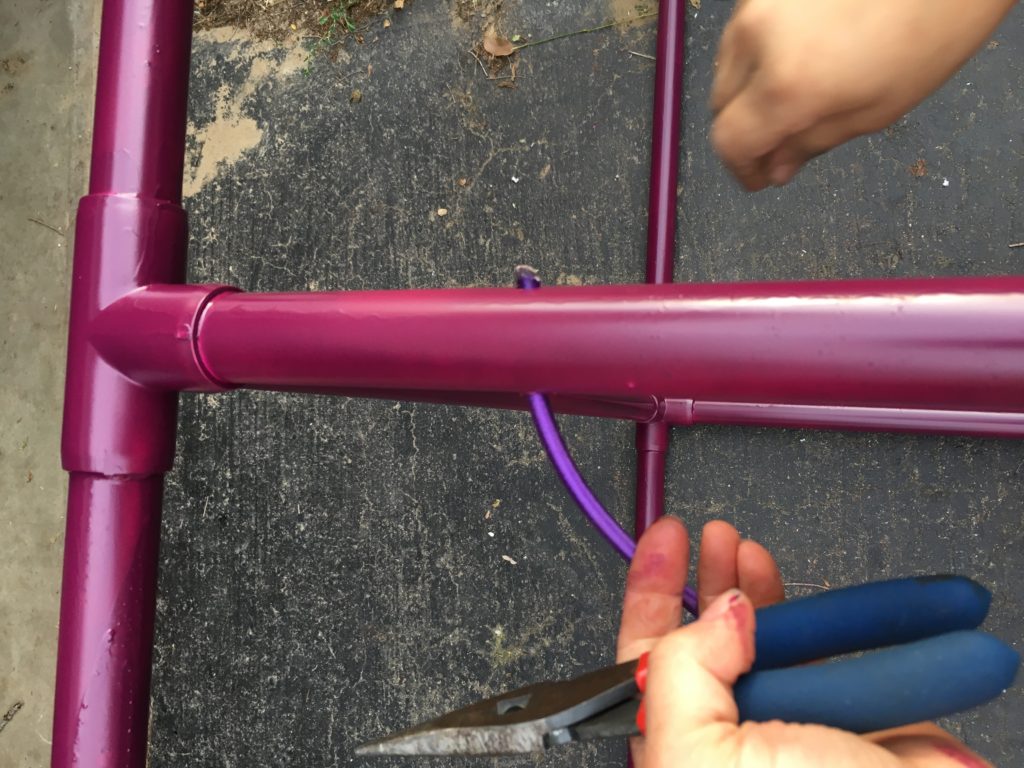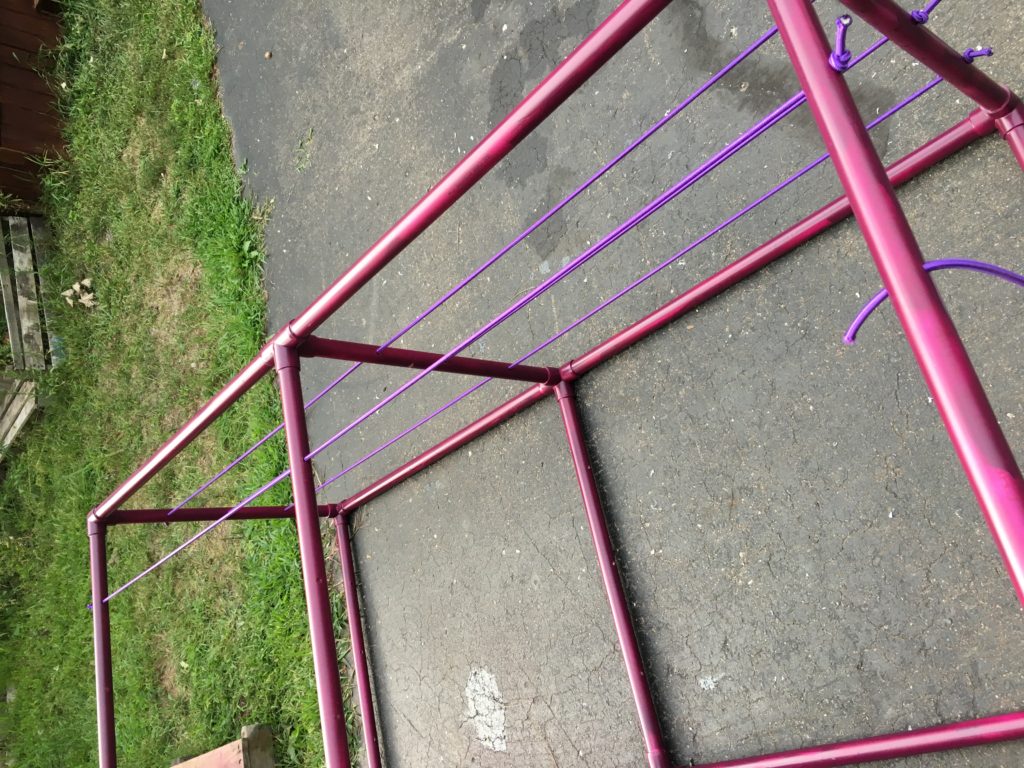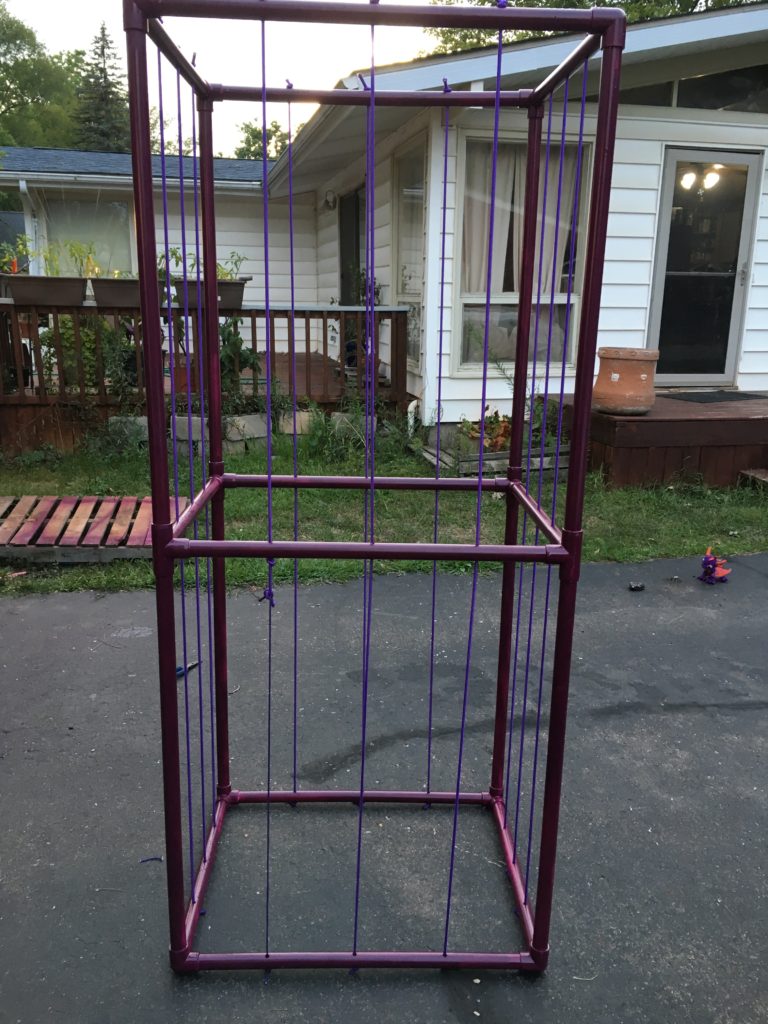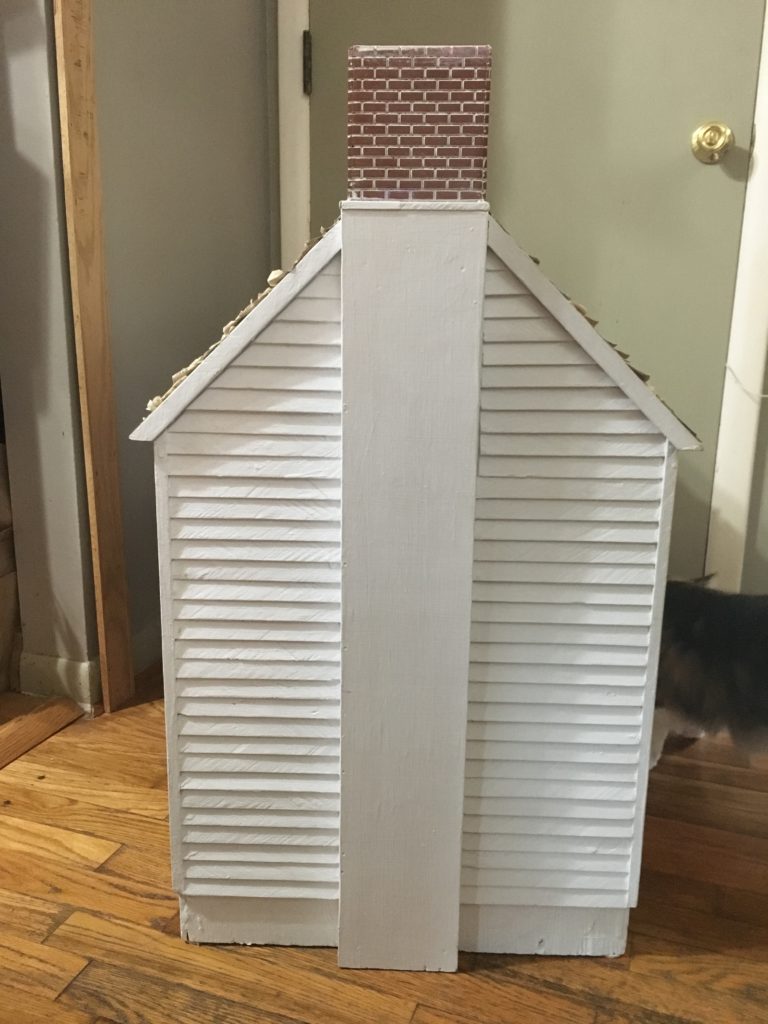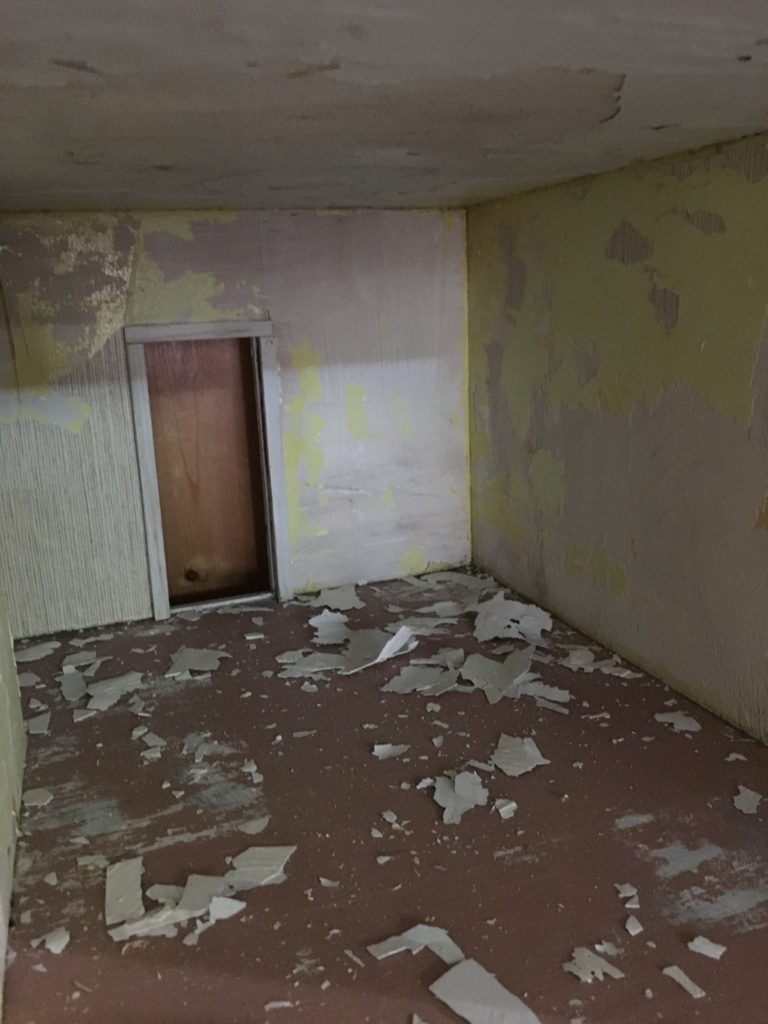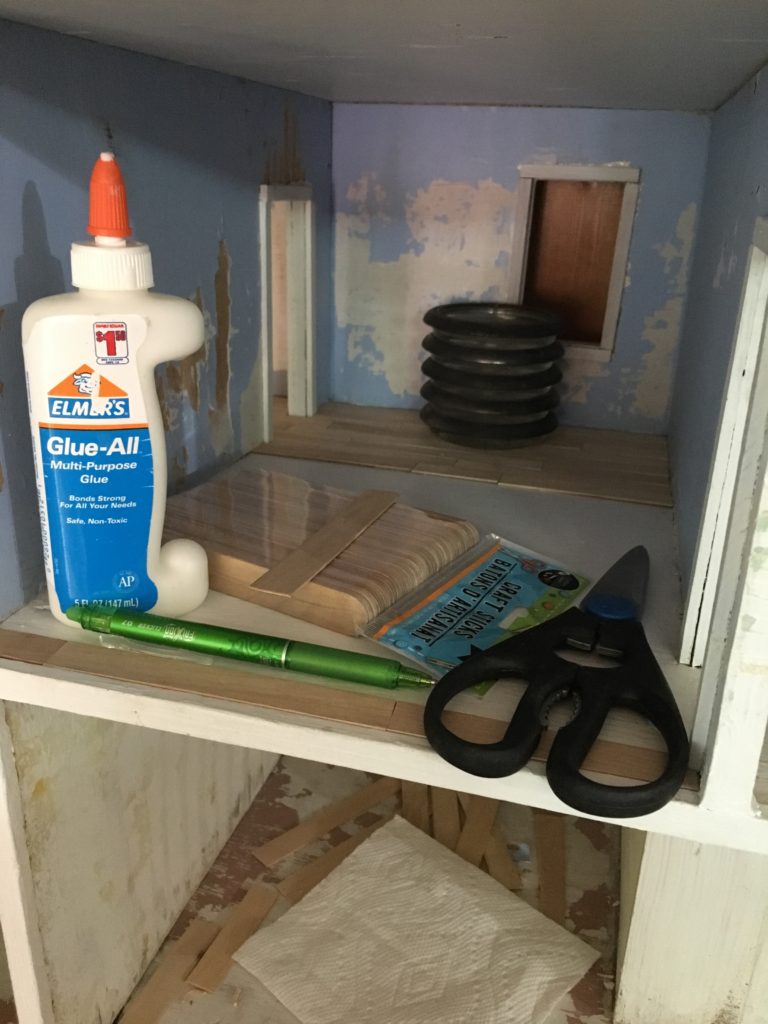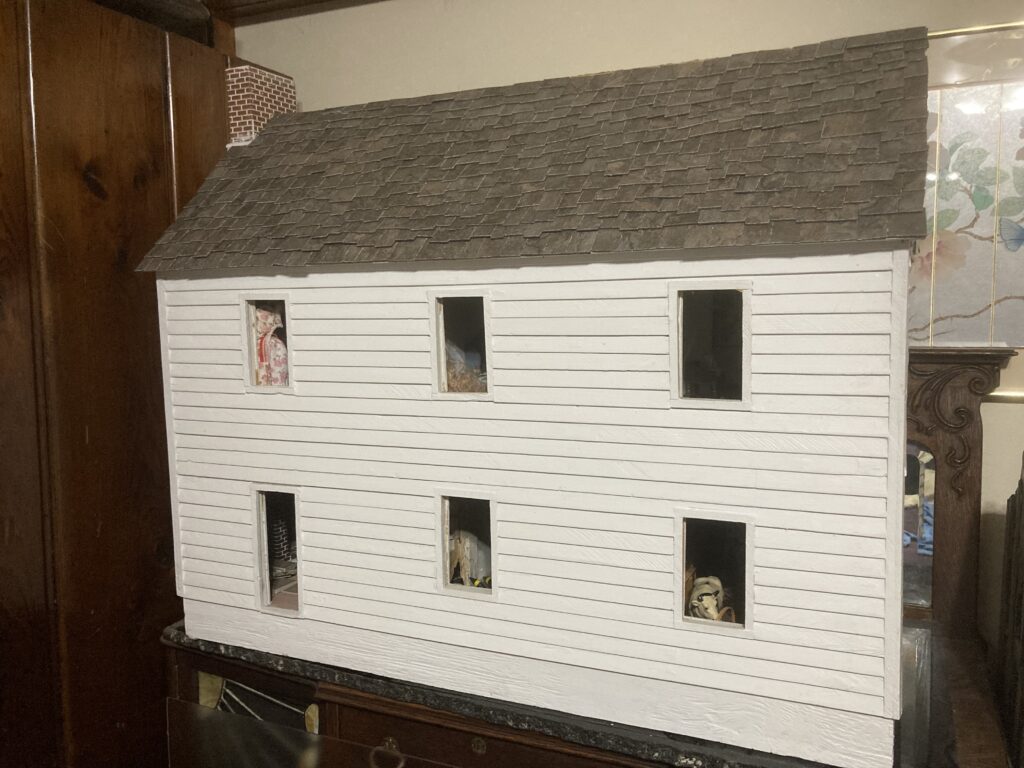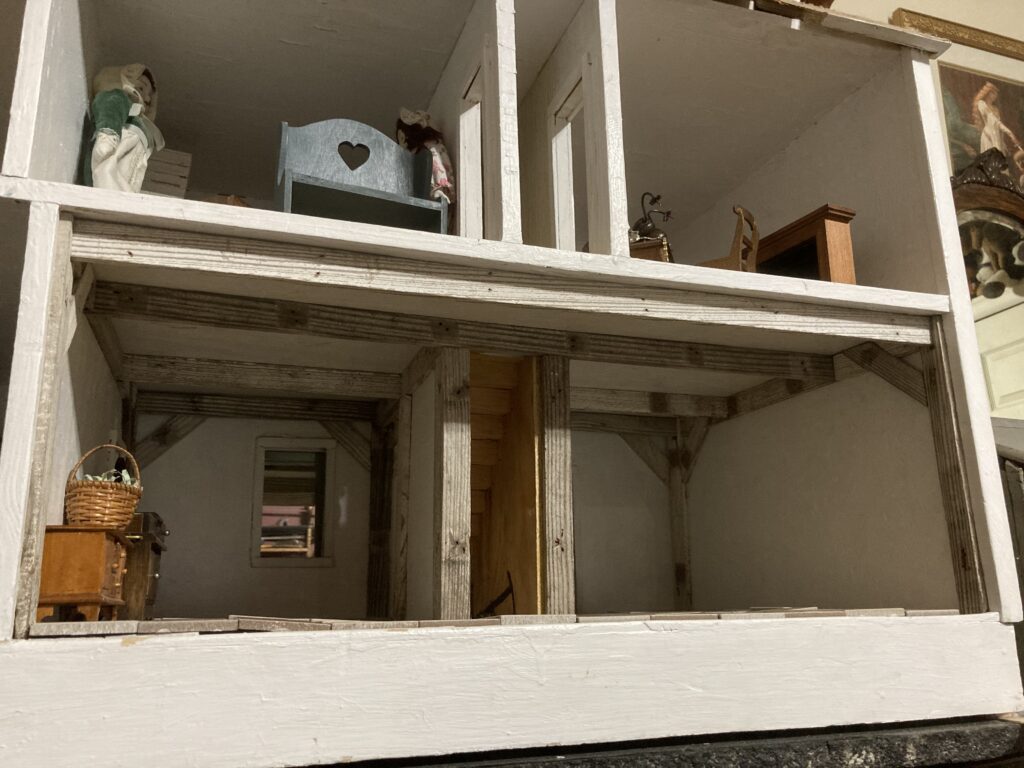

This house spoke to me for one reason or another when I found it on Marketplace. For some reason it feels older to me than the 1980 signature on the bottom. I have seen other, older houses that share the same basic shape but have different porches or a balcony on the window. I don’t know if it was built from a kit or maybe (and more likely) from plans. It has handy dandy wheels on the bottom and rolls so nicely!
The first thing that had to go on this house was the atrocious paint job. I cringed each time I looked at it. I swear someone decided to ‘spruce it up’ with chalk paint before listing it for sale, and they painted it so sloppily i just… well, I just had to fix it.
First I tried a little acetone on a cotton ball to see what exactly was underneath the paint. Was there some grand finish that begged to be restored? No–it looked like it was just white paint underneath, and it would be a mess to clean off the old paint just to get it back to white. I could just paint over it.
It took me a while to decide what I actually wanted to do with this house. I had plans for a saloon at some point, and a 1920’s style house party, with flapper girls and a grand banquet. My first thought was to make this a saloon, as the covered porch might be made old-west-ish, I suppose, but then just a week or so after I brought this house home I discovered a saloon-of-my-dreams house (actually it is a Duracraft Deluxe Victorian Mansion) that will make an awesome saloon and brothel. So this one will be my 1920’s house, and I think I am happy with that decision.
I started with some new siding to try to spruce up the outside. My mother had just re-sided her dollhouse with craft sticks, and I liked the result, and so I decided to try it myself.

I used jumbo craft sticks, cutting the curved ends off to make them squared. Using hot glue (or I am sure that wood glue would be a better choice, but with a bit more patience needed for drying), I glued one long edge of the sticks at a time, overlapping them and keeping them staggered so they looked randomly applied.


After I got the siding done, I cut some sticks length-wise to make slimmer window trim, and then glued them in place over the siding.


Once siding and trim were in place, I painted it white. It took several coats of paint to cover the wood and especially the black porch, but I am much pleased with it. I haven’t decided what to do with the roof, so for now, it will remain messy black. I will probably paint it, maybe like slate? I’ll have to do some research.
The porch still troubles me a little. I want to get more of an art deco feel, but something that will still fit in with the rest of the house. I am considering railings and corbels, to fancy it up a bit. Of course it still needs doors and windows, but that will come later.
I haven’t done much on the inside, yet. I am really hoping for some sort of grand staircase, but somehow without cutting into the wood floors. Hmm. Maybe a freestanding staircase that can be moved around? Lots to consider. I will, however, add a railing to the second floor so I can have guests leaning on it and looking down. And also, perhaps, a speakeasy in the attic. So many ideas!
12/26/2022 UPDATE: I’ve been toying with different ideas for a while on this one. After initially writing this post, I came across a different house that I want to make into a flapper girl house, so I wasn’t sure what to do with this one. I decided to try a 1970’s theme. I repainted it gold for now, and plan on adding shingles. Here is an updated pic:

I have also added a lattice handrail made from tin ribbon. I might add triangles of that ribbon into the upper corners of the porch posts for decorative brackets. I have toyed with the idea of painting the trim brown but I don’t think I can bring myself to do it.
The idea for this house is now to decorate the inside with golds, browns, oranges, and greens to catch some of that 1970’s feel. I always loved the show “That 70’s Show” and hope to recreate some of that.


